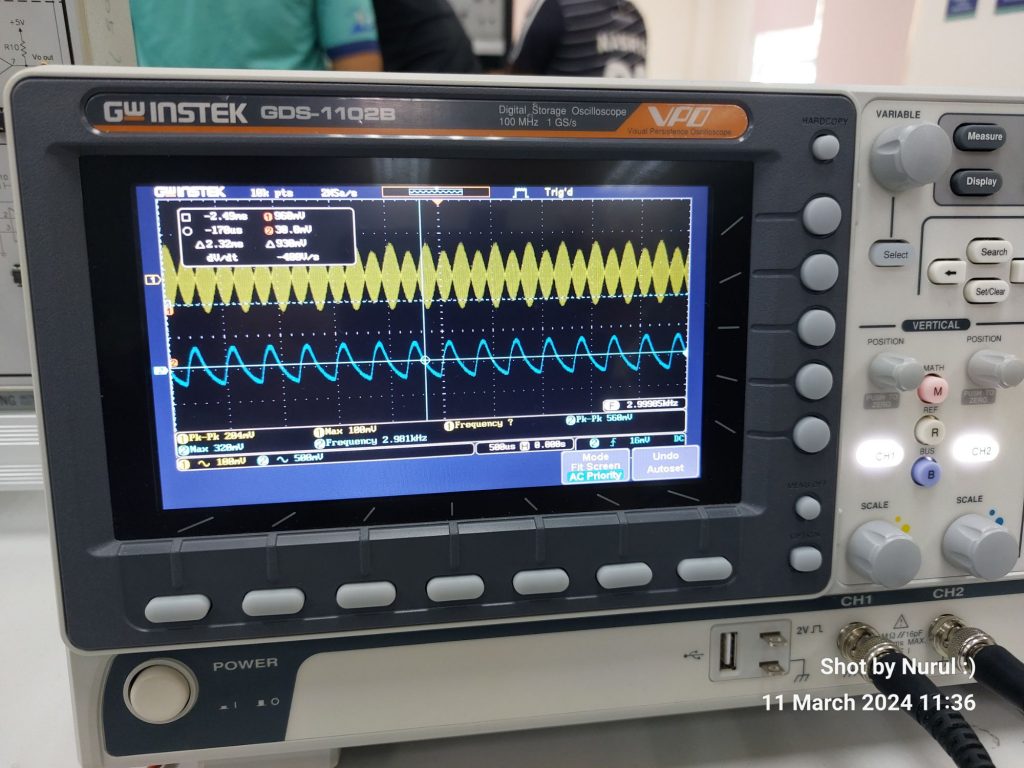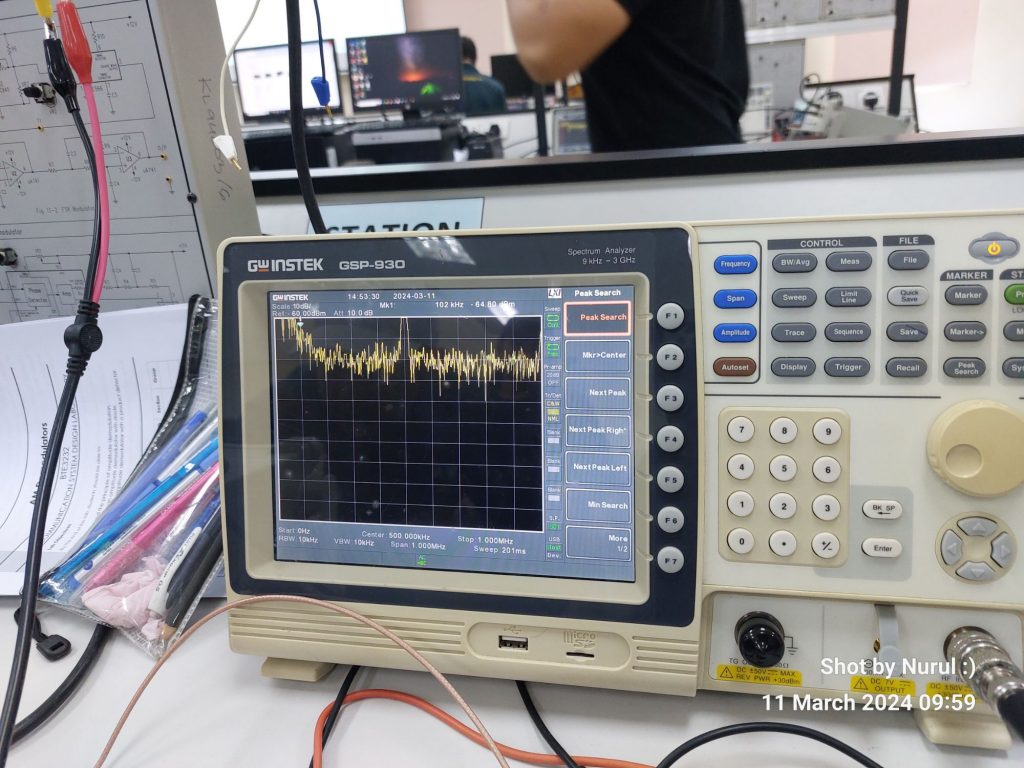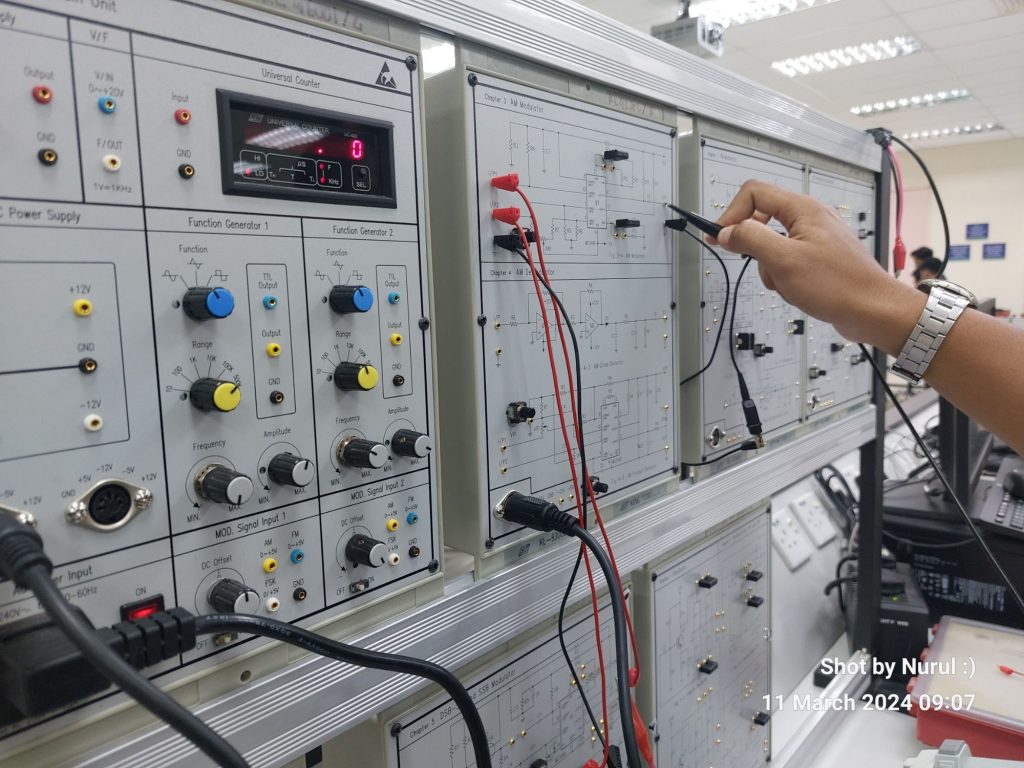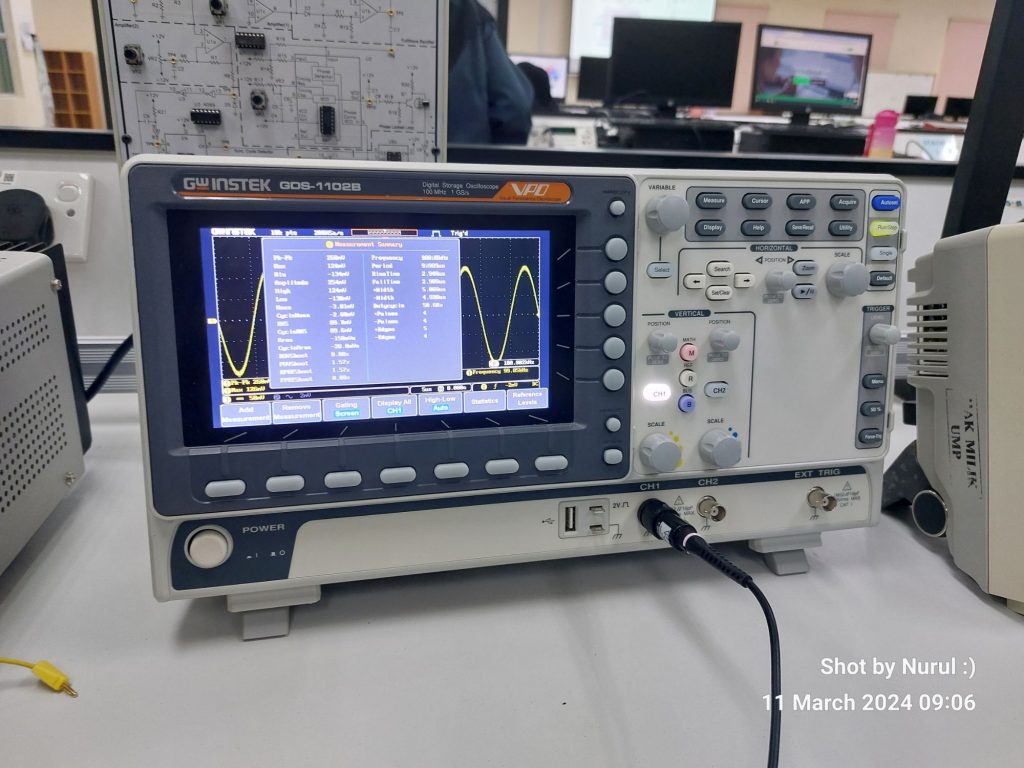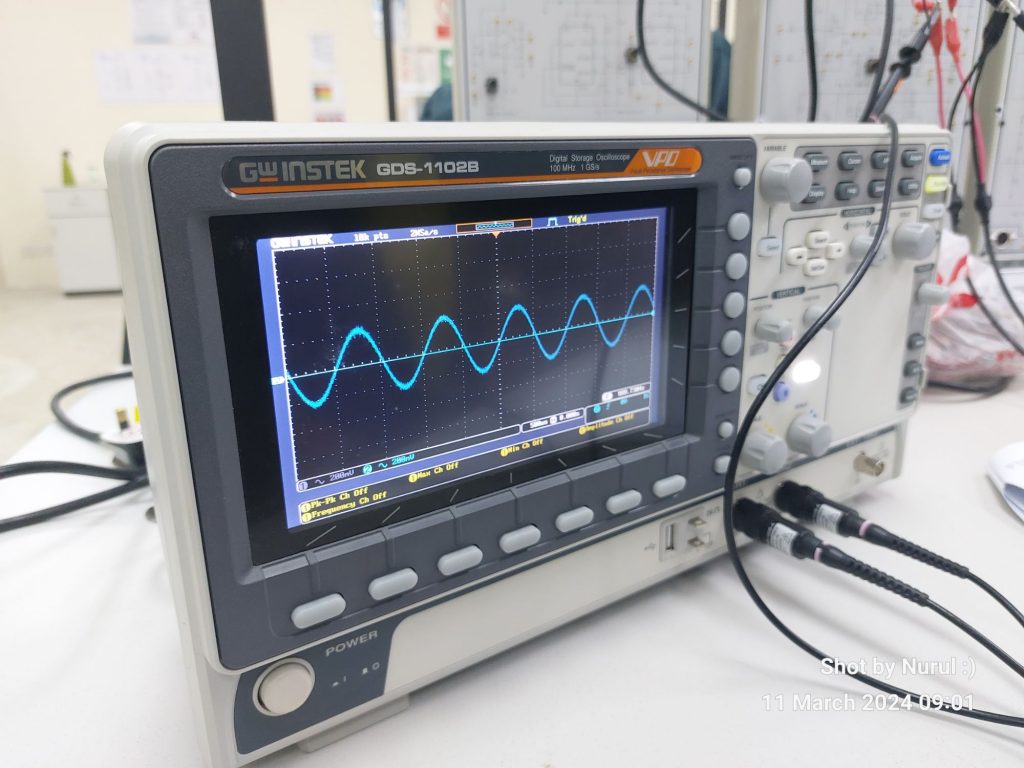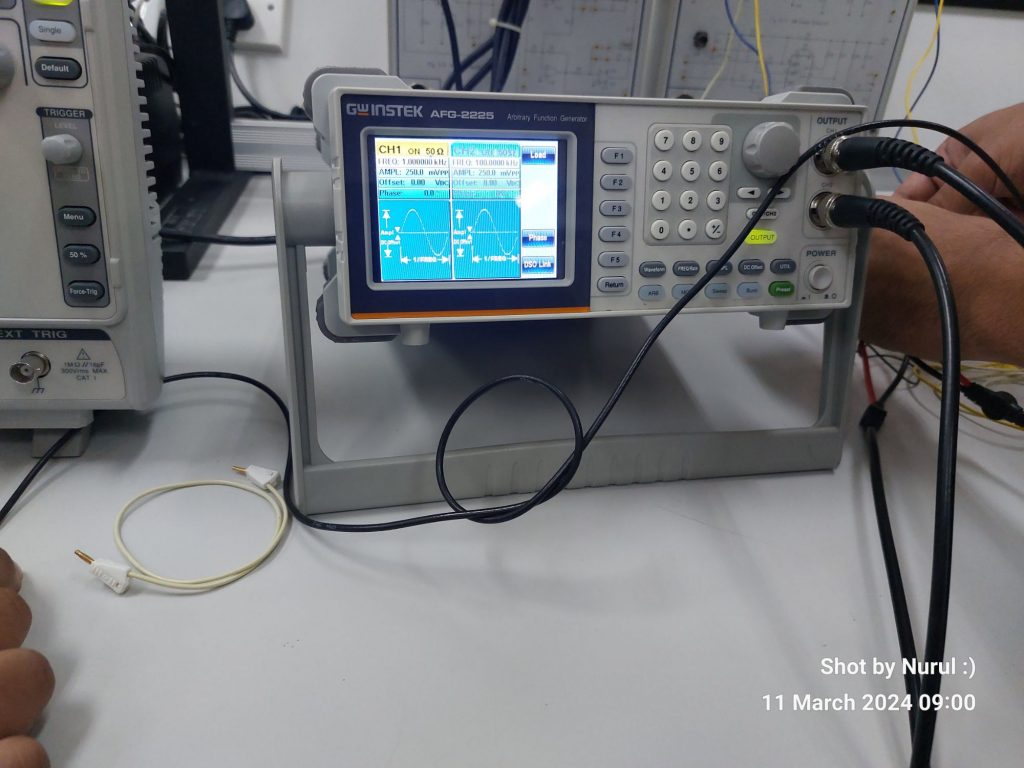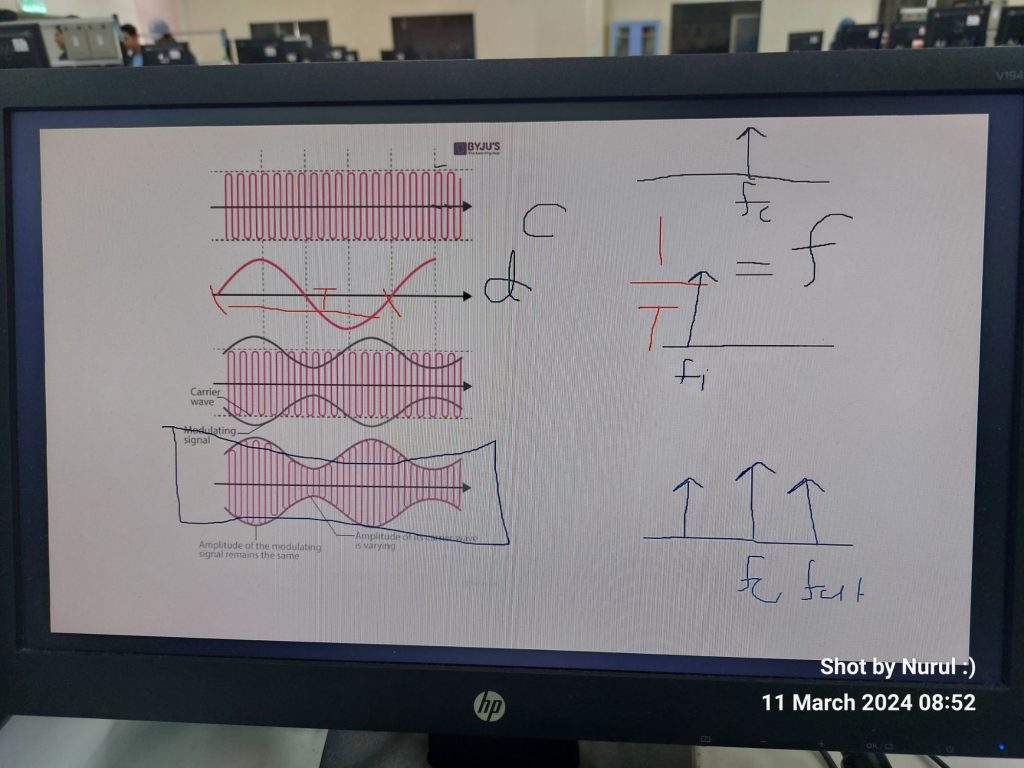A collaboration between UMPSA STEM Lab and Pahang State Education Department.
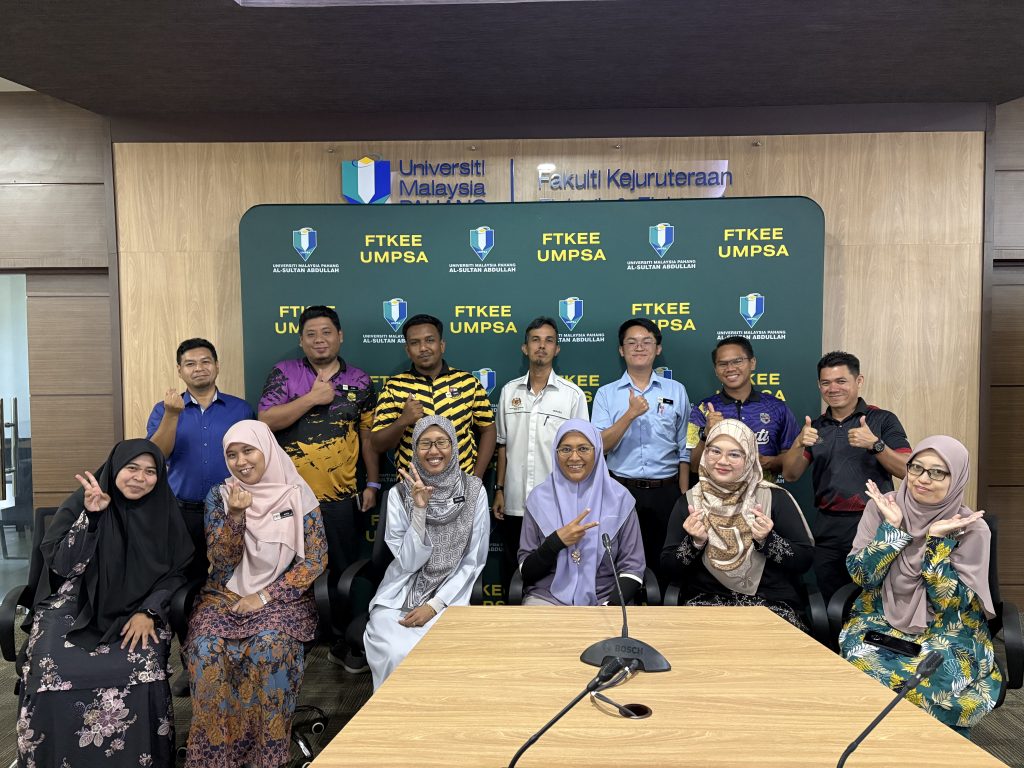
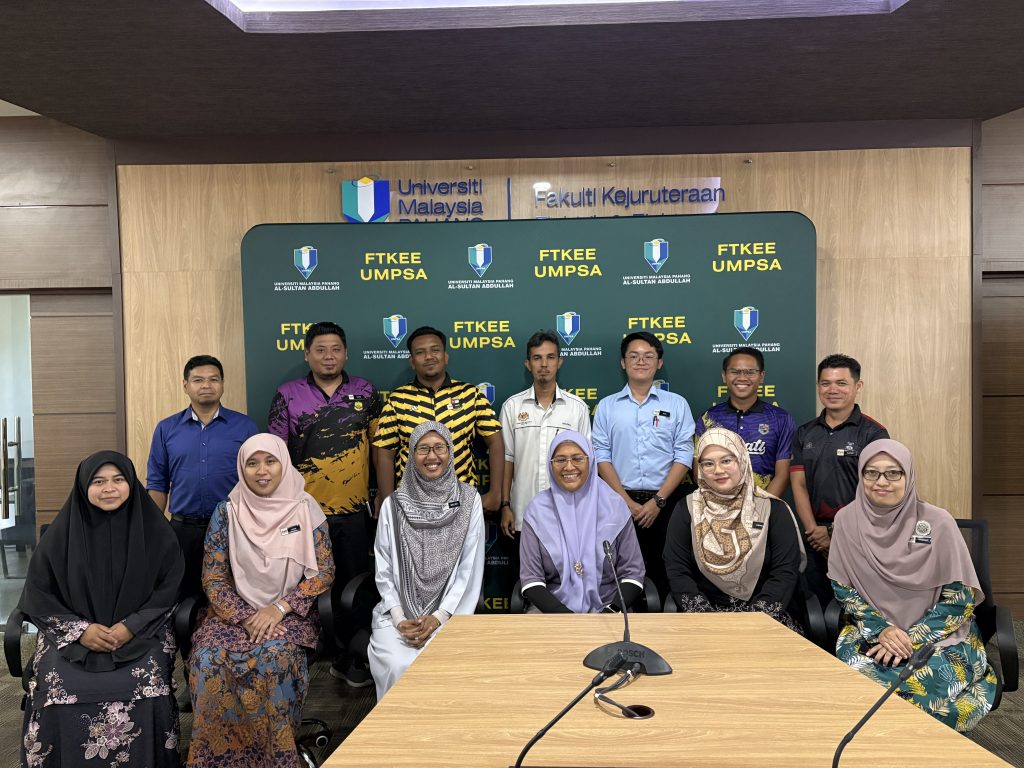
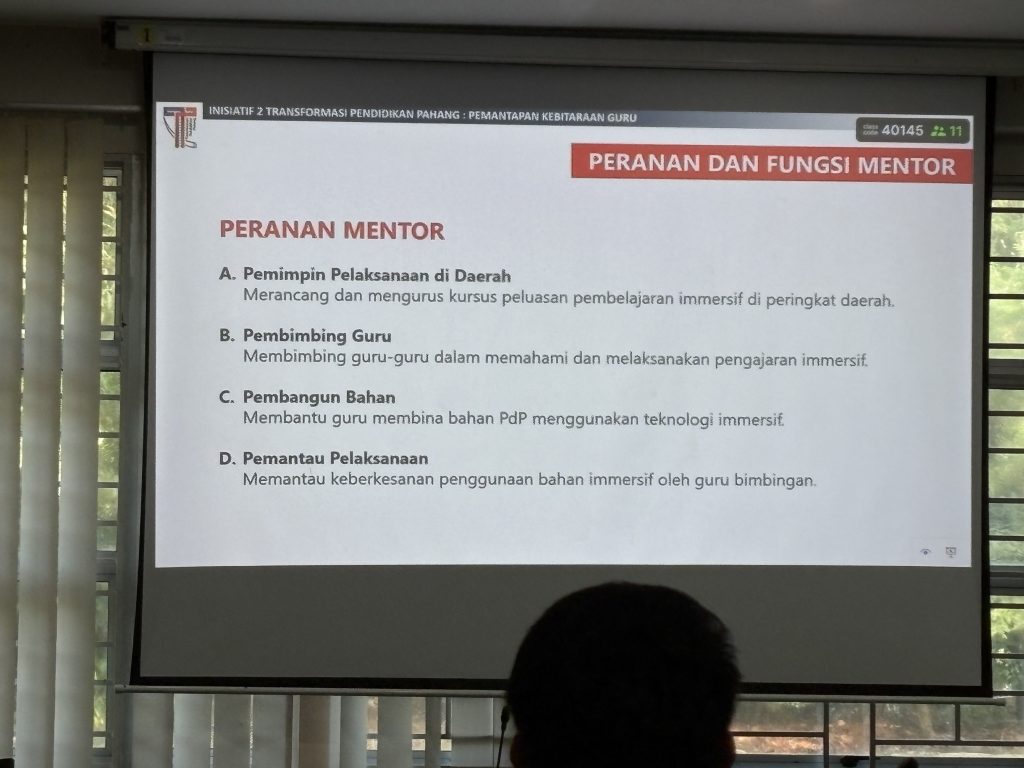

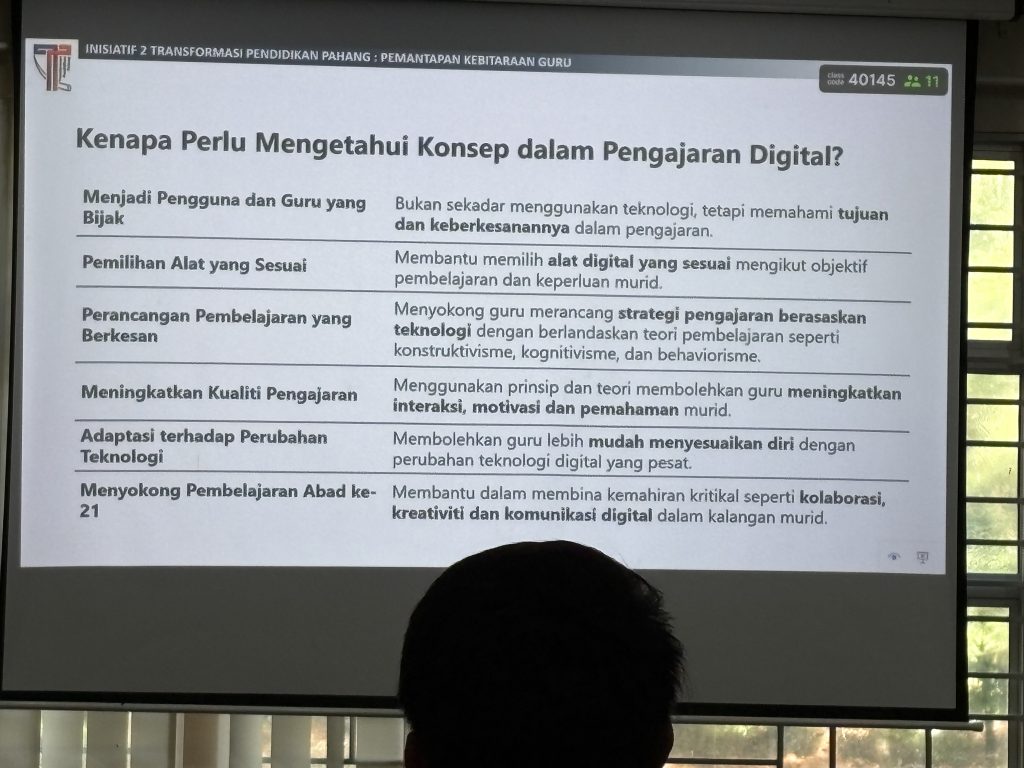
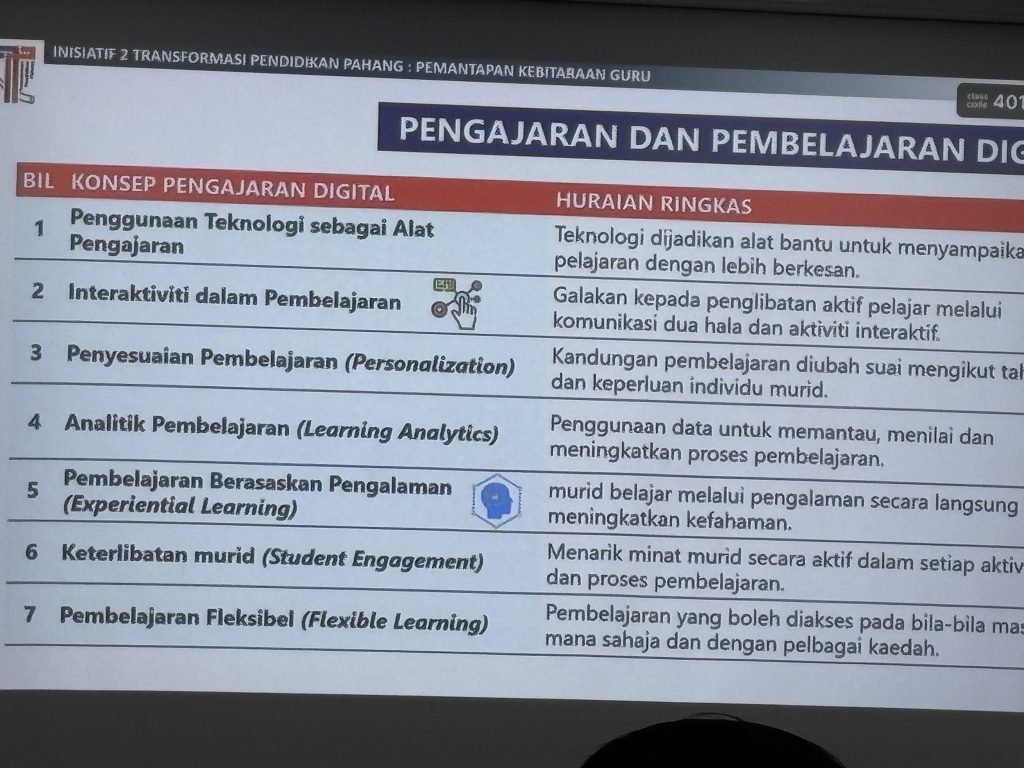
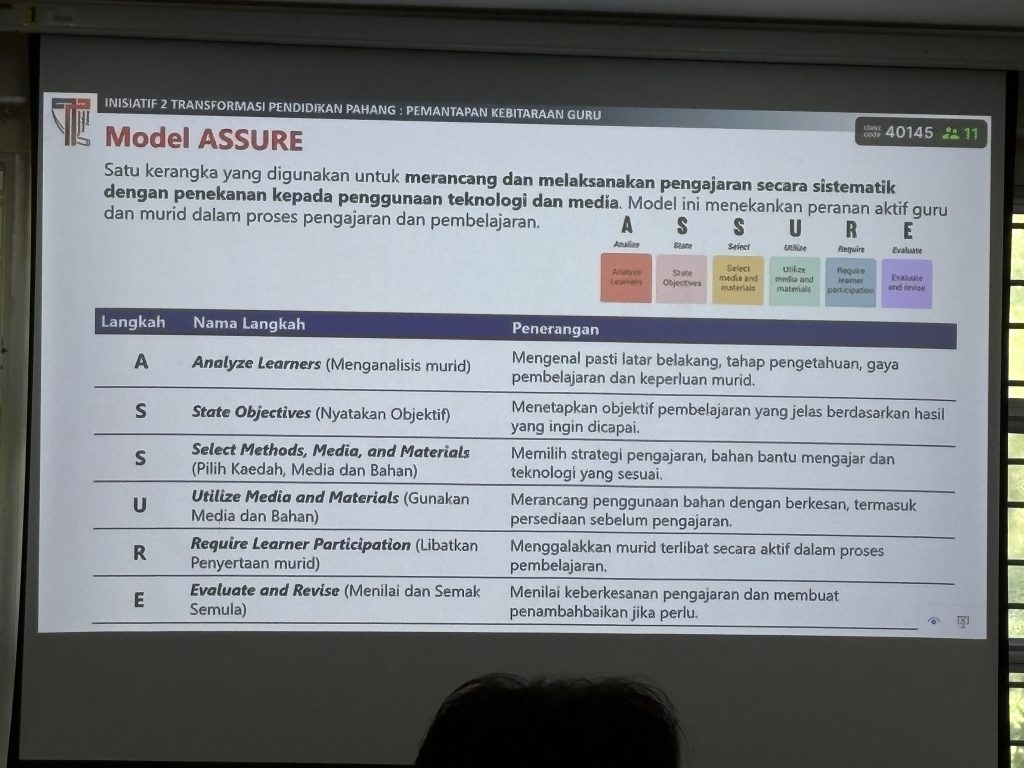

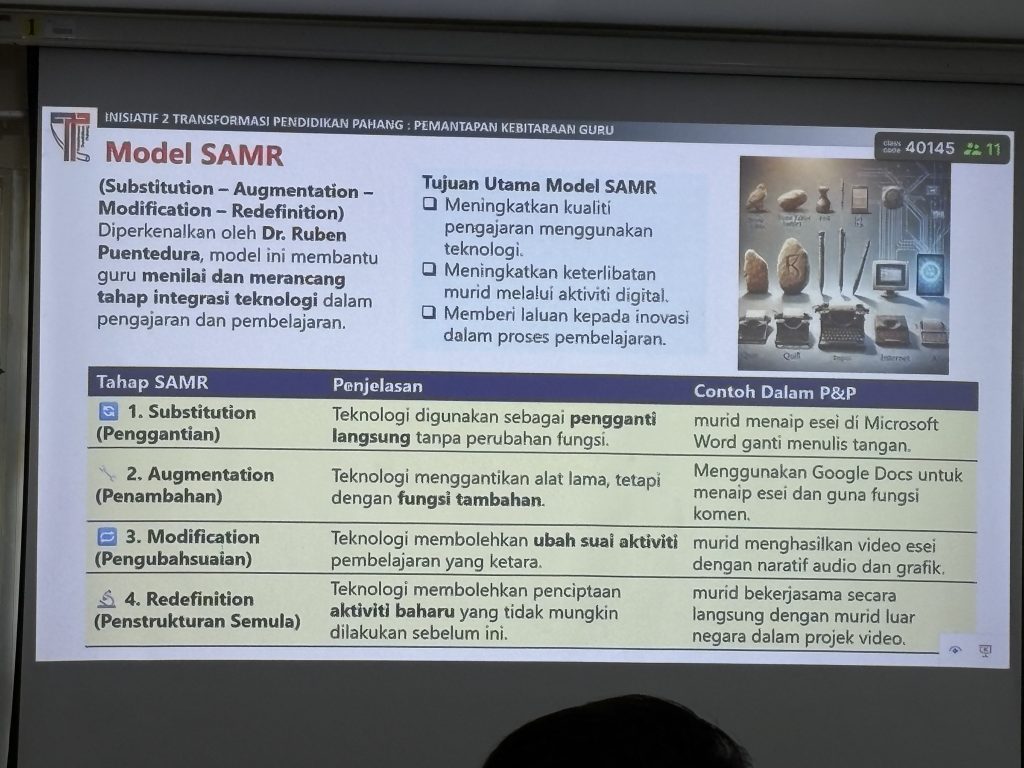
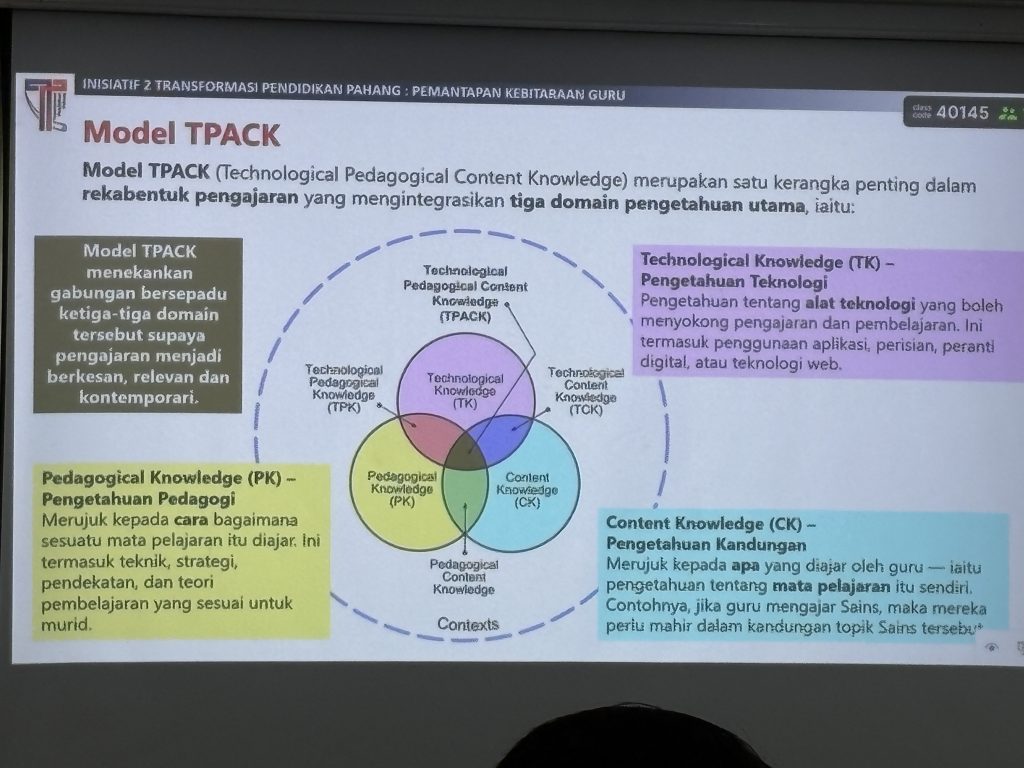


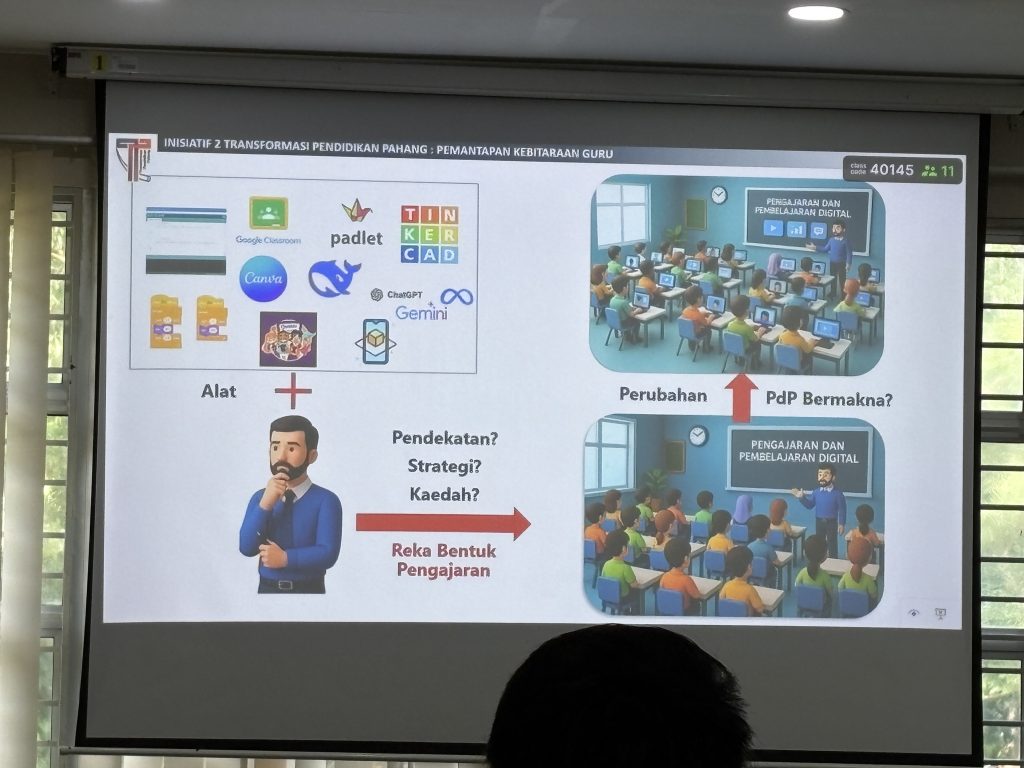

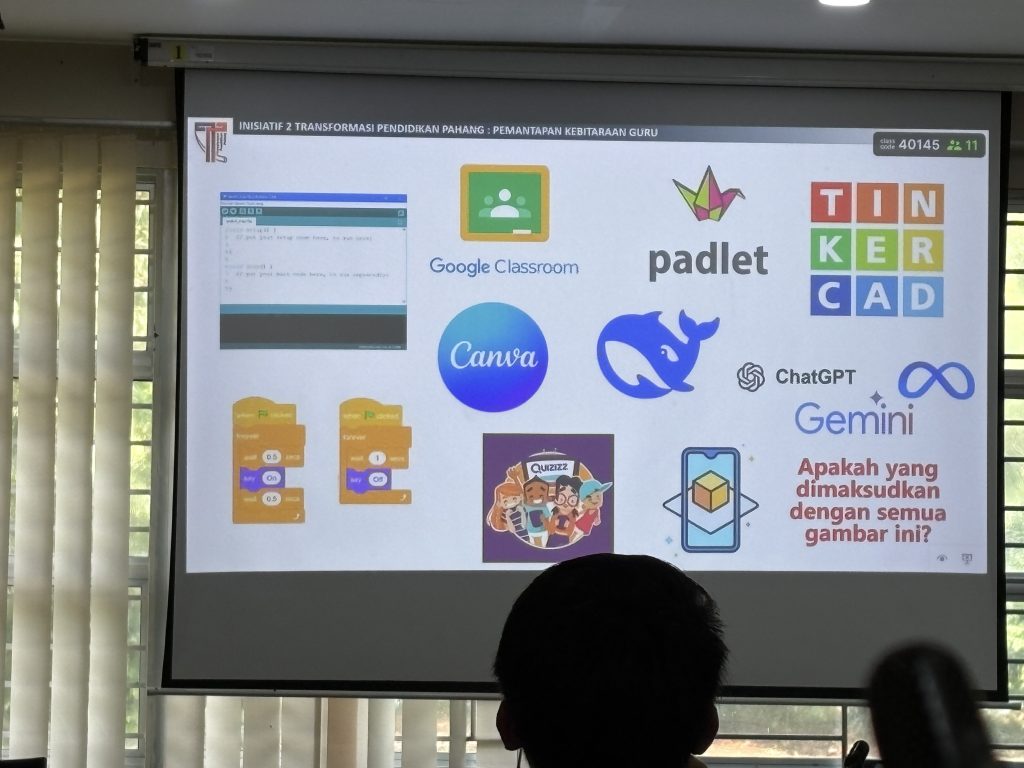
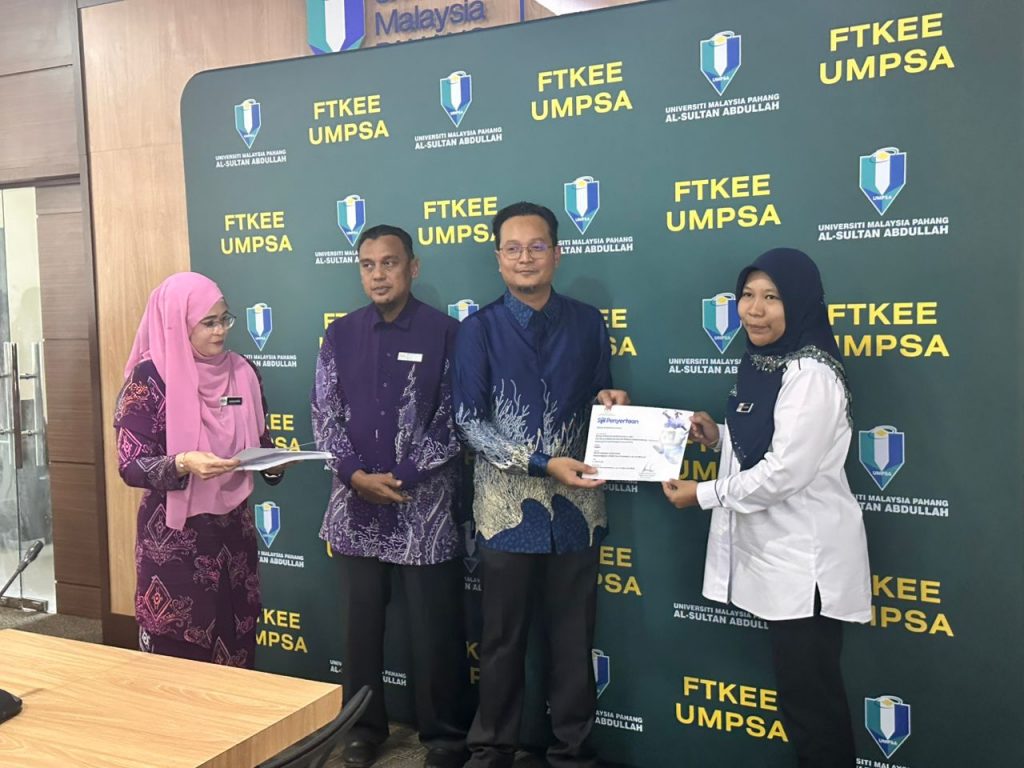



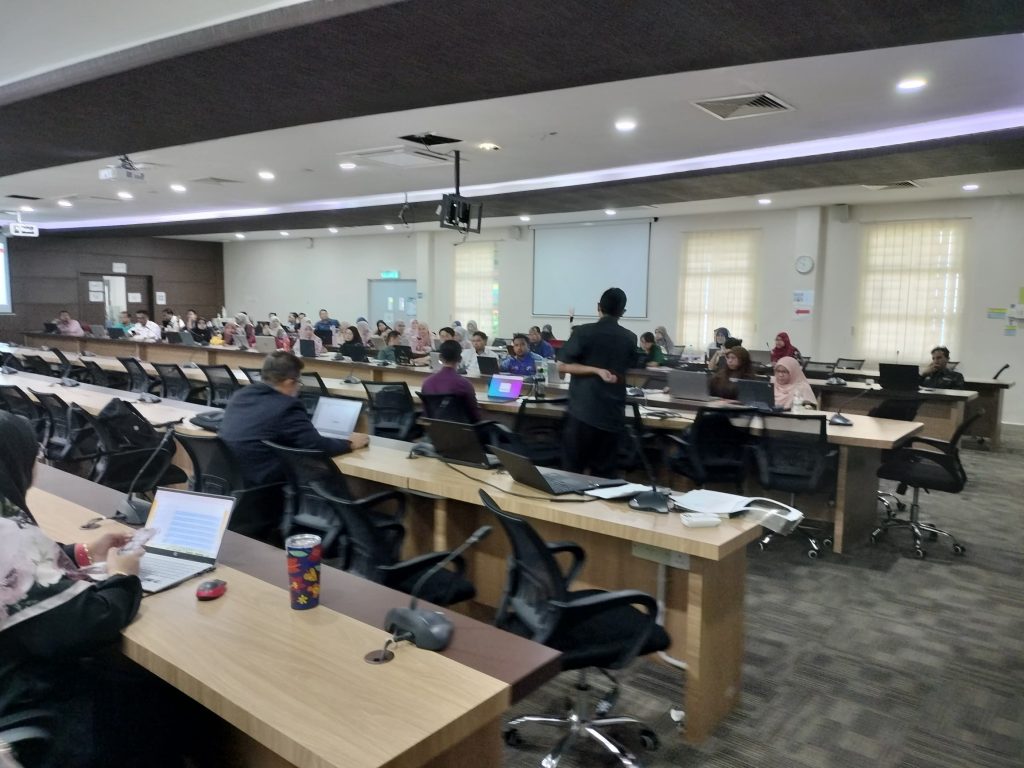
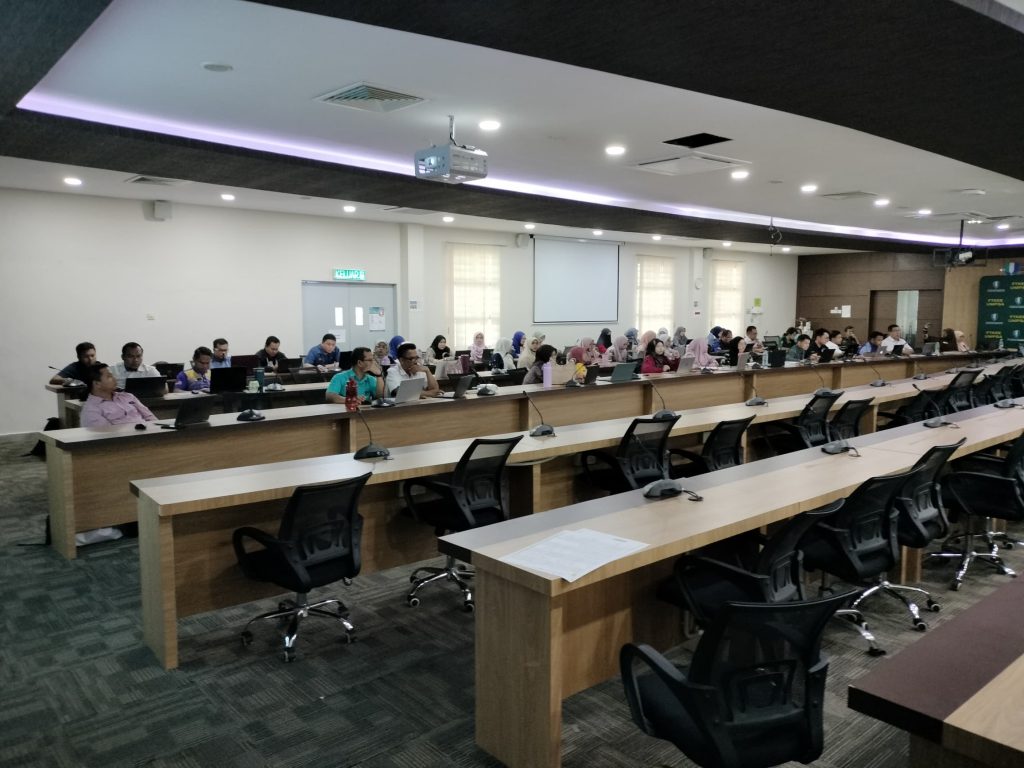
The world is digital, but life is analog..
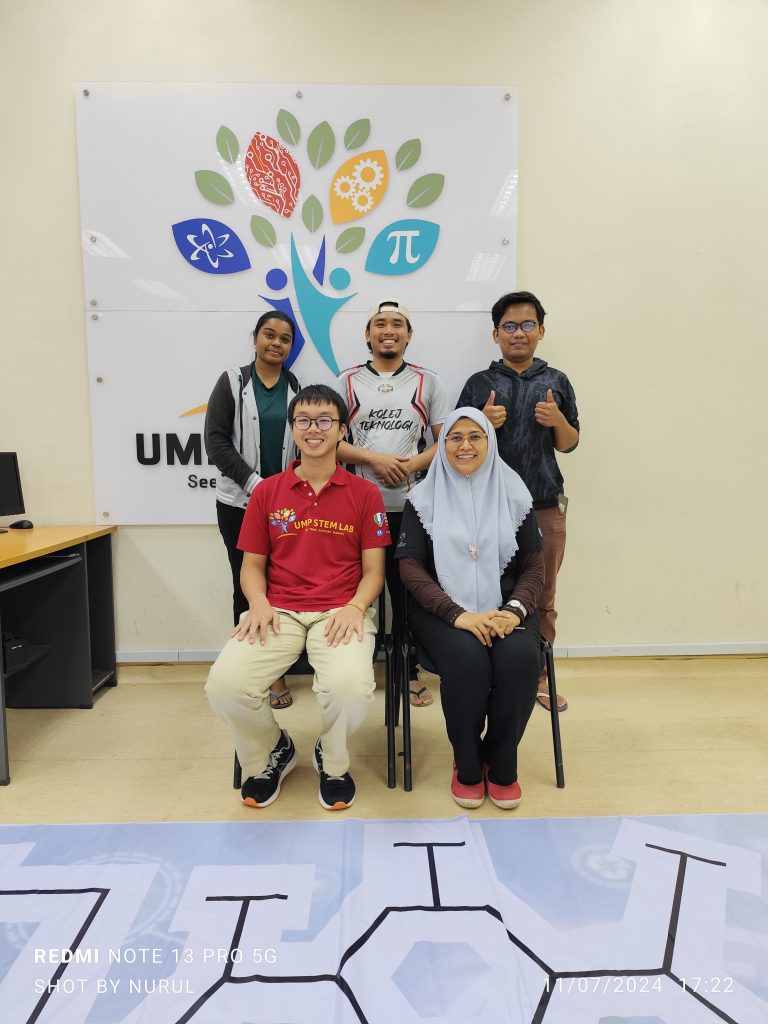
It’s a pleasure to have Quan as a mentor in UMPASA STEM Lab. Thank you for your active participation and wishing you all the best in your studies in Beijing Jiatong University.
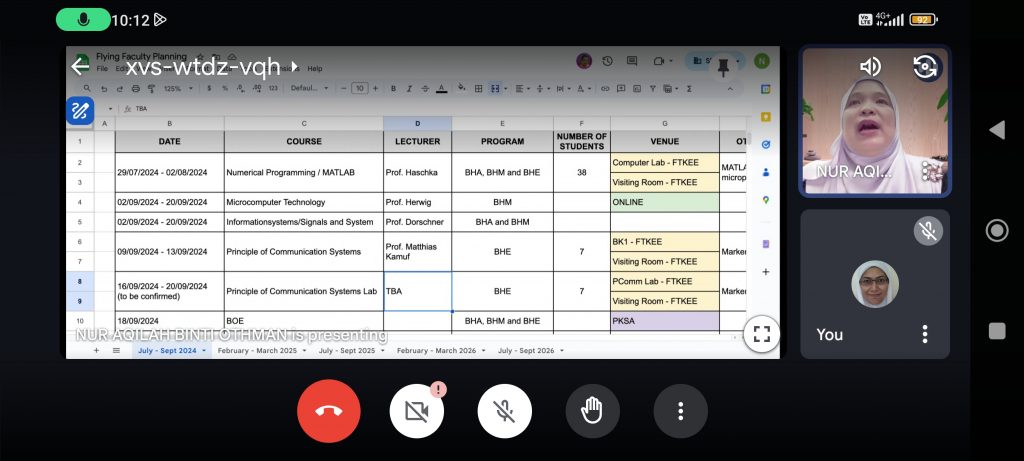
Today, the BTE3232 Communication System Design Laboratory had the honor of hosting Dr. Eng. Agussalim, S.Pd., MT from Magister of Information Technology UPN “Veteran” Jawa Timur for a global classroom initiative. Dr. Agussalim’s lecture, titled “An Alternative Data Collection Method for IoT Devices in a Smart Environment Scenario using Delay-Tolerant Network,” provided valuable insights into innovative approaches to data collection in IoT environments.

An Alternative Data Collection Method for IoT Devices in a Smart Environment Scenario using Delay-Tolerant Network
In today’s world, where everything is connected through technology, we use many smart devices that gather data. But sometimes, these devices struggle to collect data in areas with poor or intermittent internet connections. To solve this problem, there is a new method called Delay-Tolerant Network (DTN). DTN allows devices to share data even when the internet connection isn’t always available.


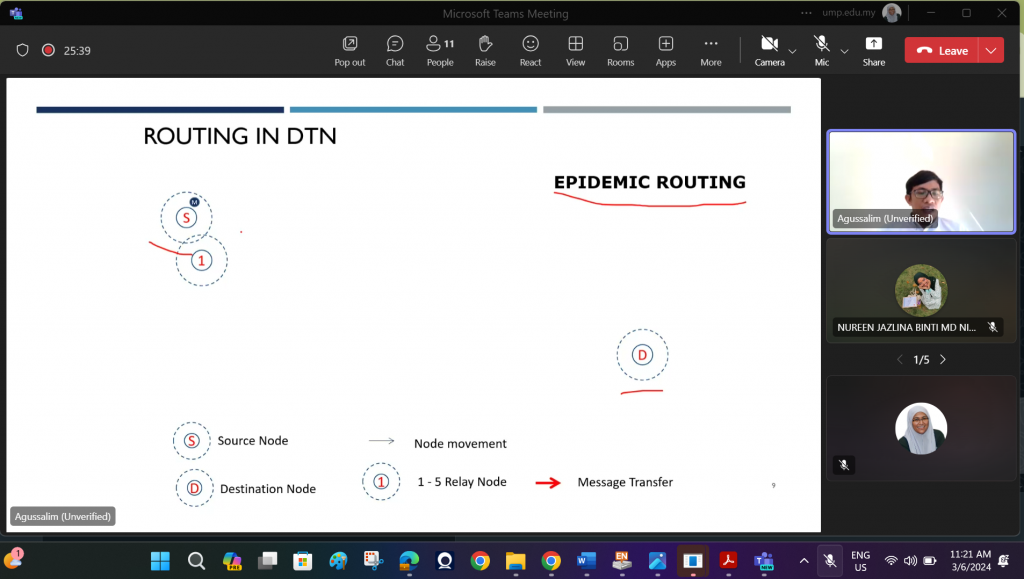
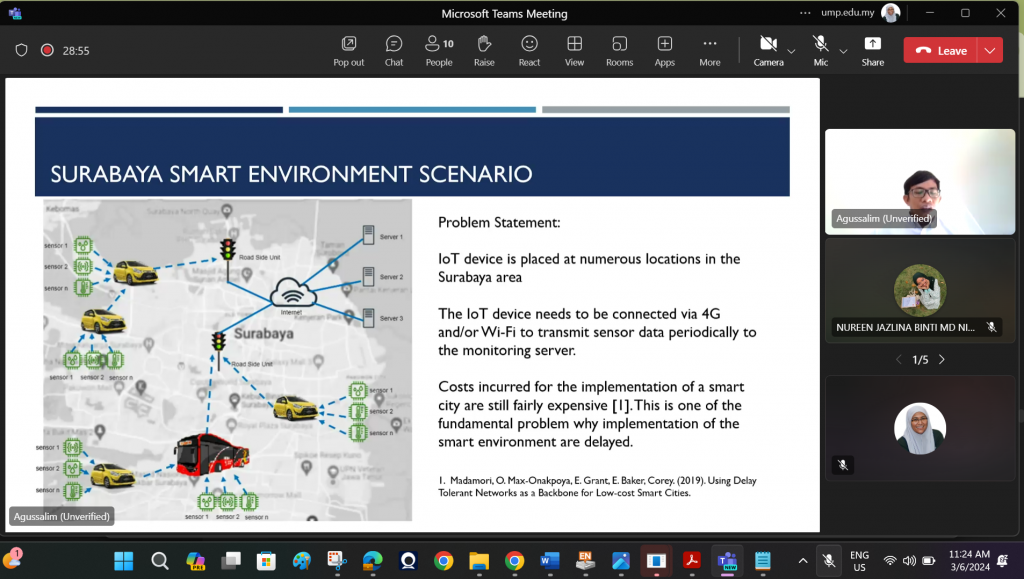
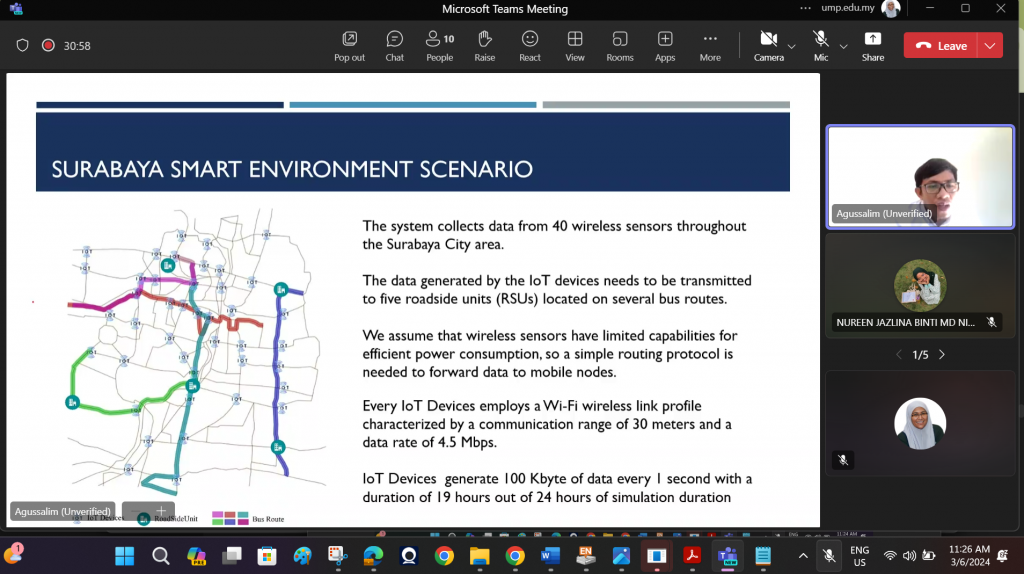
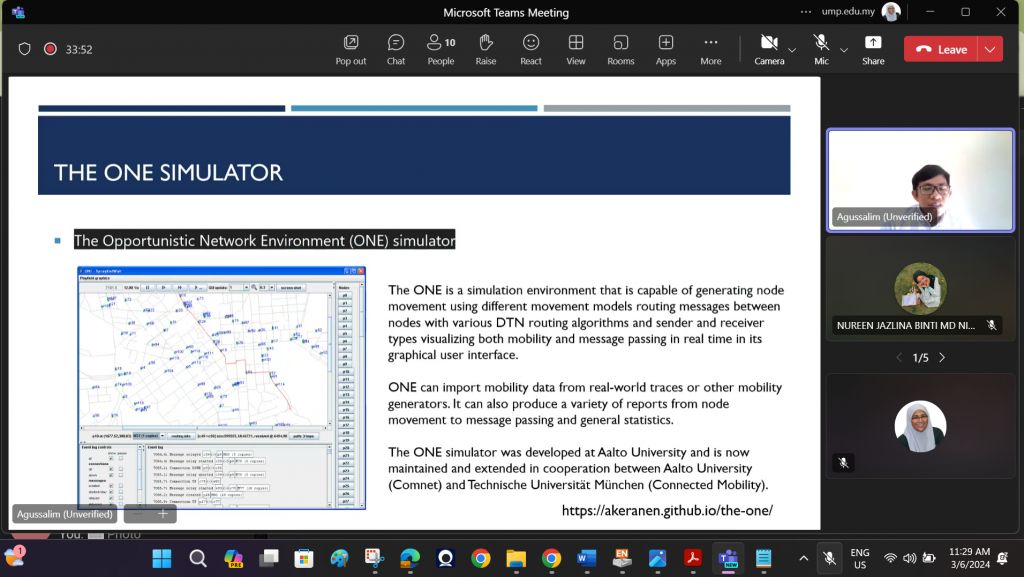
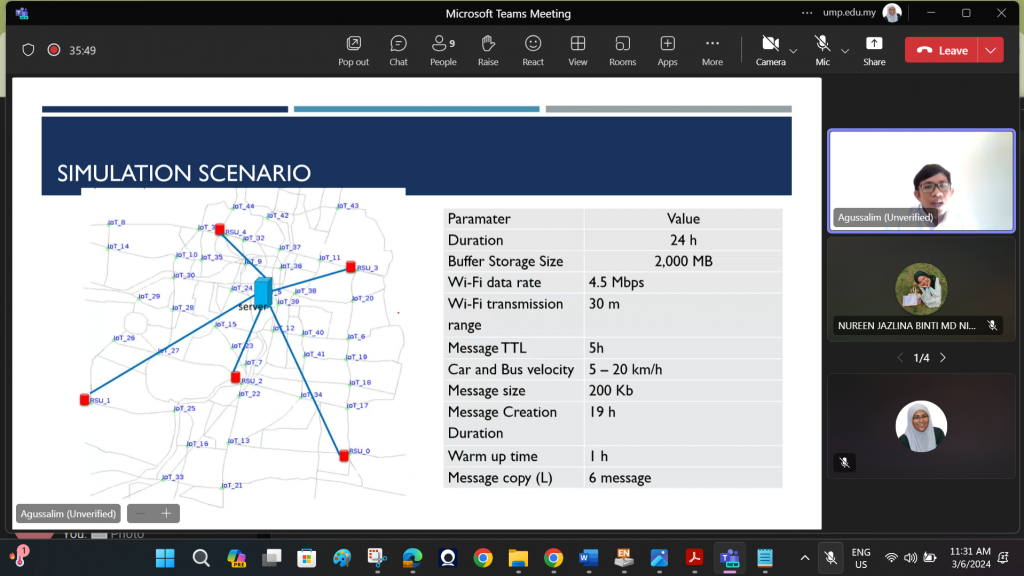

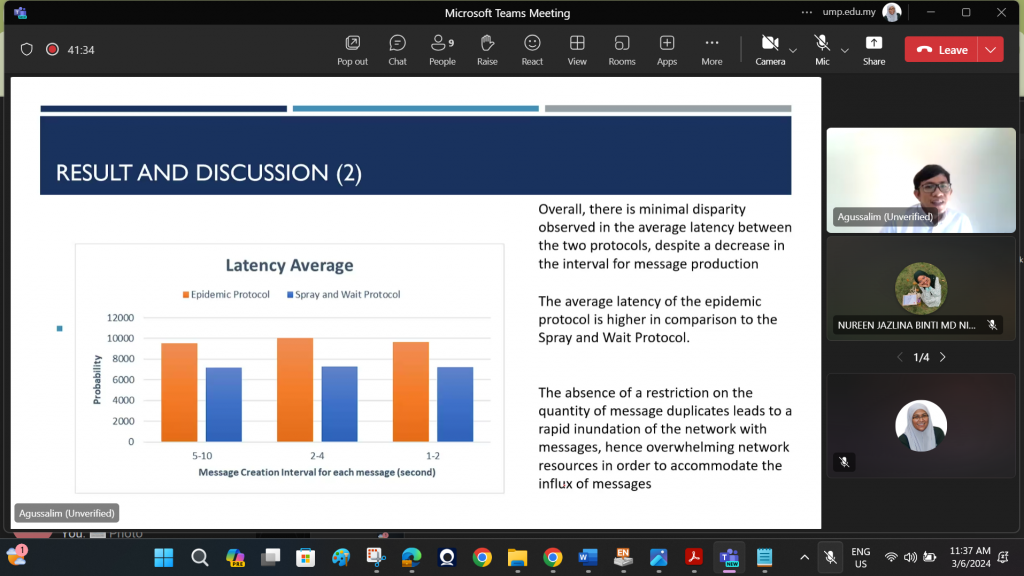
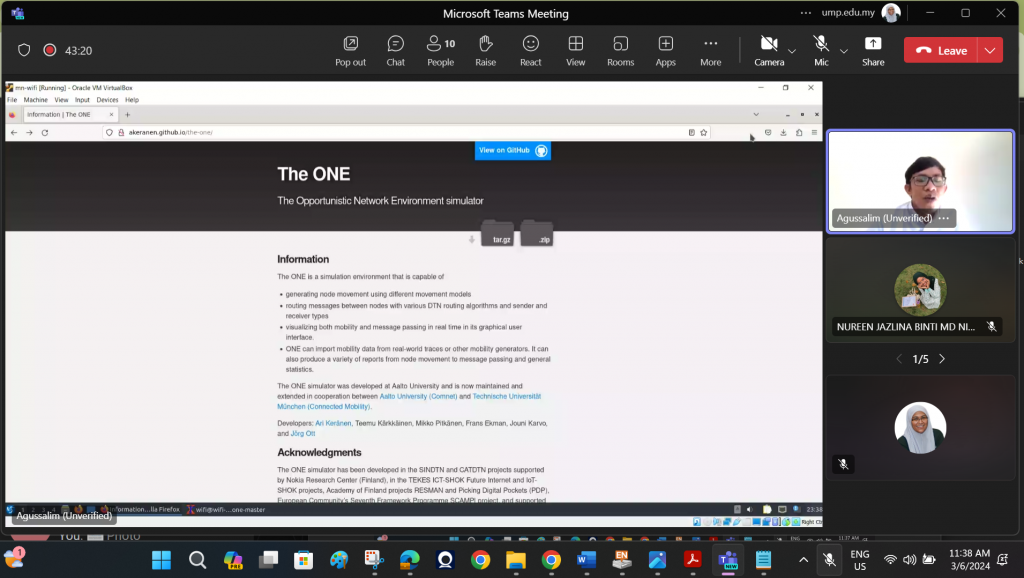


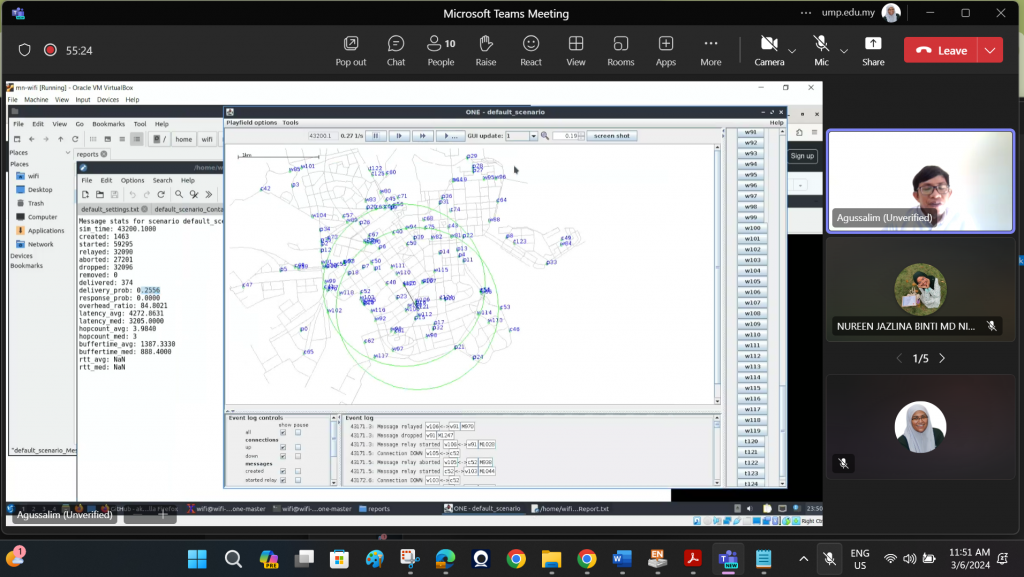
Delay-Tolerant Network (DTN) is a novel networking paradigm that allows for communication in environments where continuous end-to-end connectivity is not guaranteed. Unlike traditional networks that rely on stable connections, DTN employs store-and-forward mechanisms to opportunistically route data packets through intermittent links. This resilience to network disruptions makes DTN particularly well-suited for IoT applications in smart environment scenarios, where reliable data collection is paramount.
Discussion on the Questions Asked During the Session
During the session, Dr. Agussalim addressed a range of questions, shedding light on the intricacies of Delay-Tolerant Networks (DTN) and their applications in IoT environments. Here’s a summary of the key points discussed:
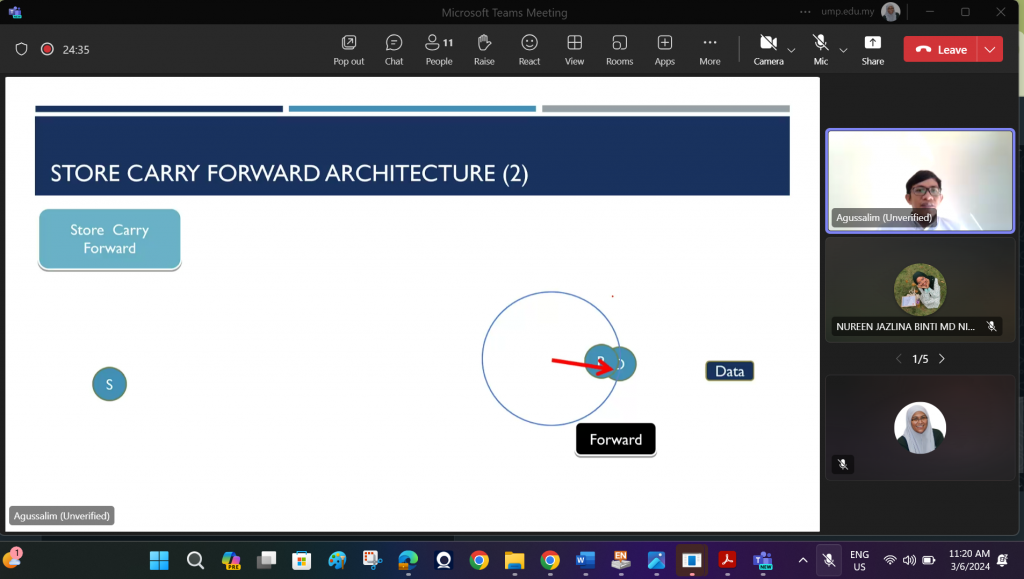
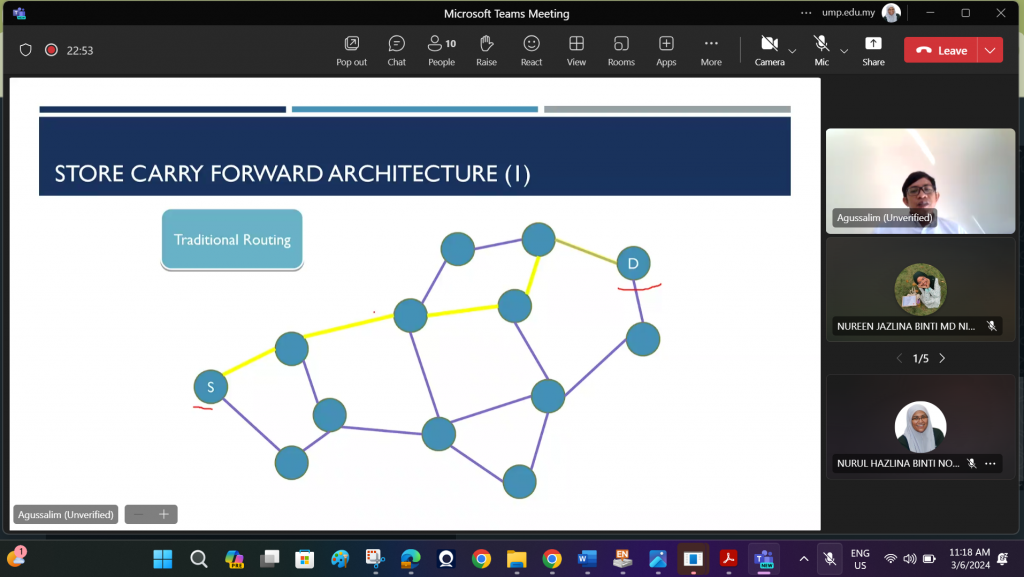





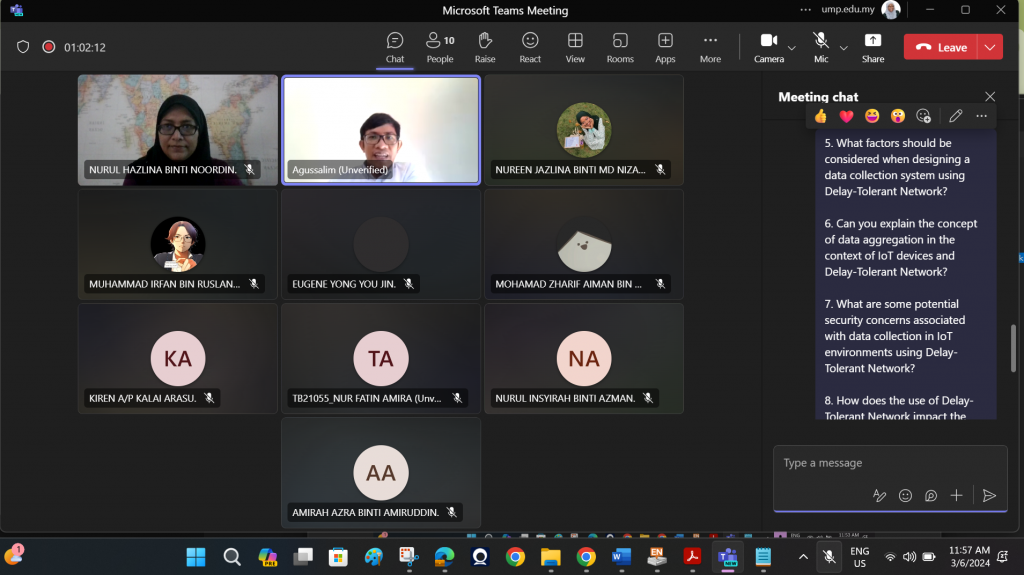
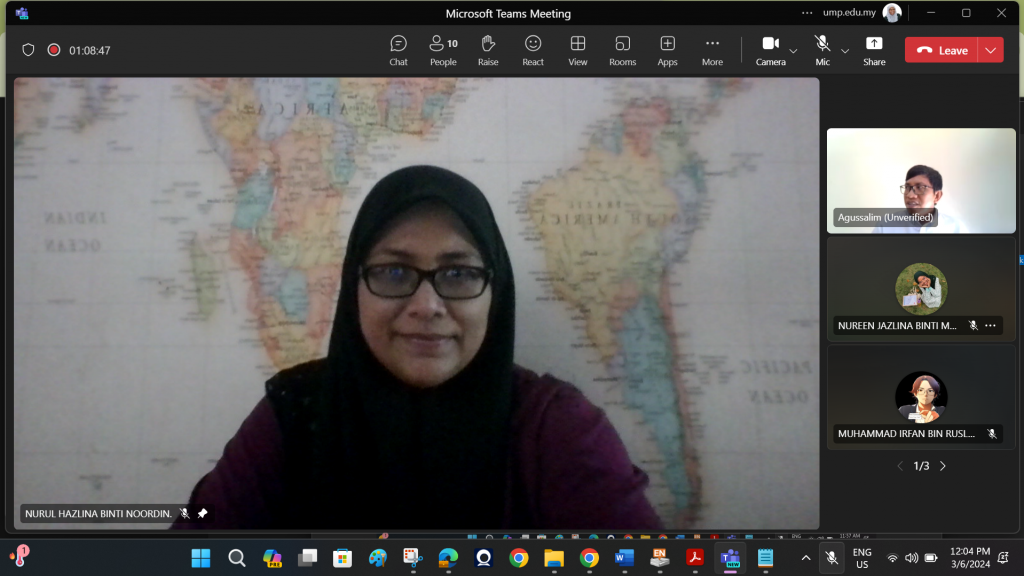
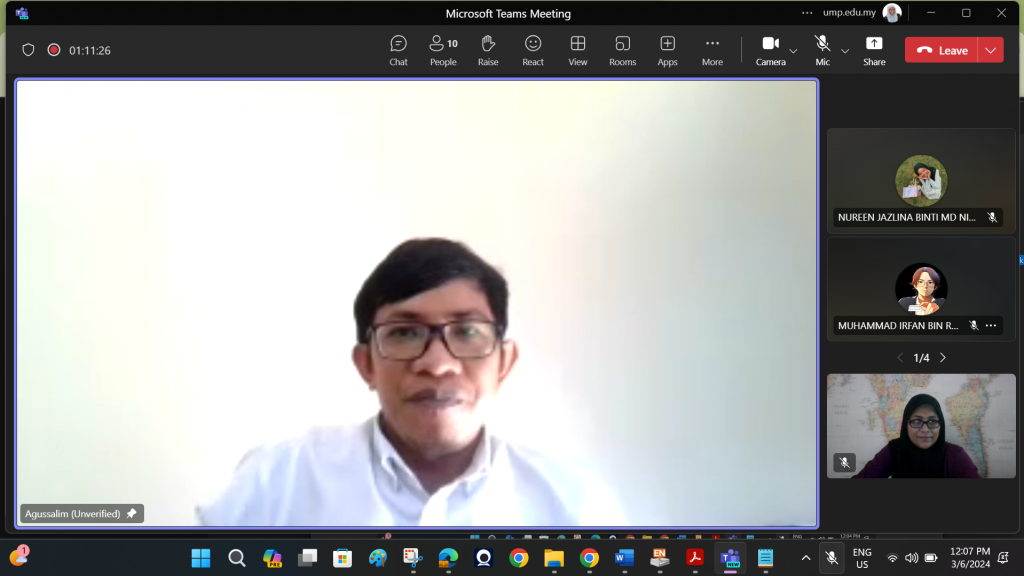
Reflection
As a participant in this global classroom initiative, I found Dr. Agussalim’s lecture to be interesting and relatable with the work we are currently developing involving IoT Applications on UMP STEM Cube. Delay-Tolerant Networks is indeed an alternative data collection methods for IoT devices, opening up new avenues for research and innovation. I look forward to future opportunities to engage with experts from other universities, as it offers a valuable platform for exchanging ideas and learning from diverse perspectives.
In particular, this session underscored the importance of understanding the network aspect of IoT, highlighting its critical role in shaping the future of smart environments.
Nurul Hazlina, June 3rd.

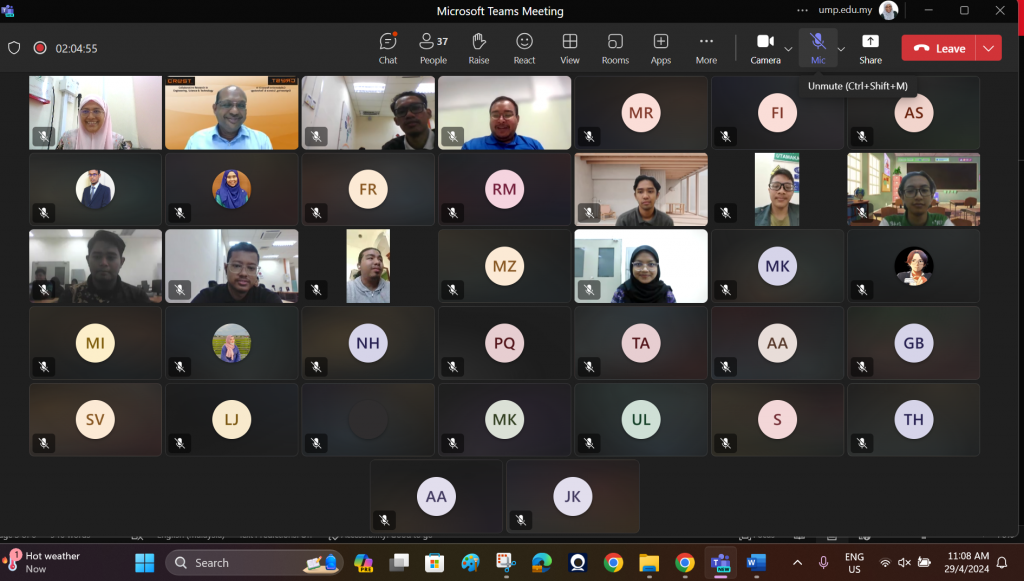
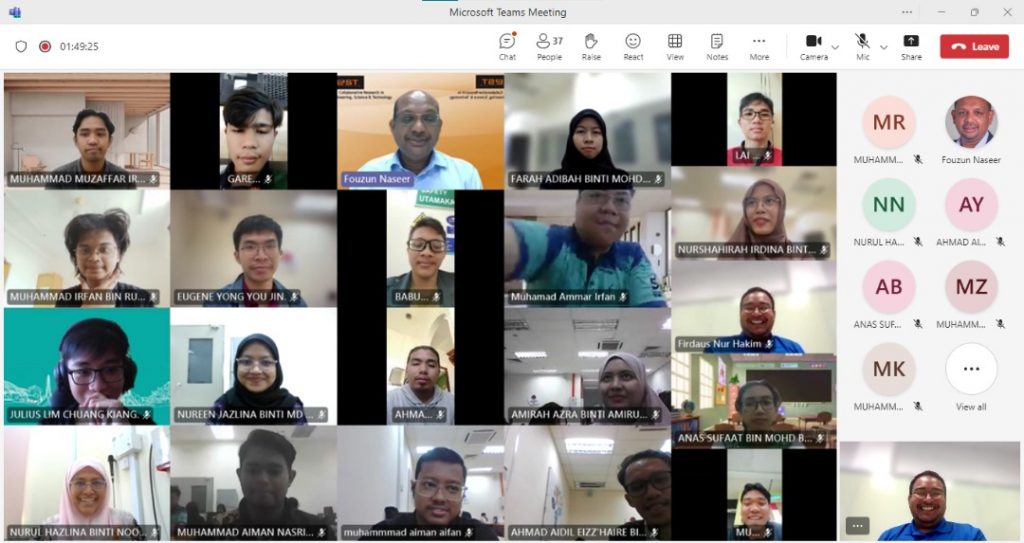
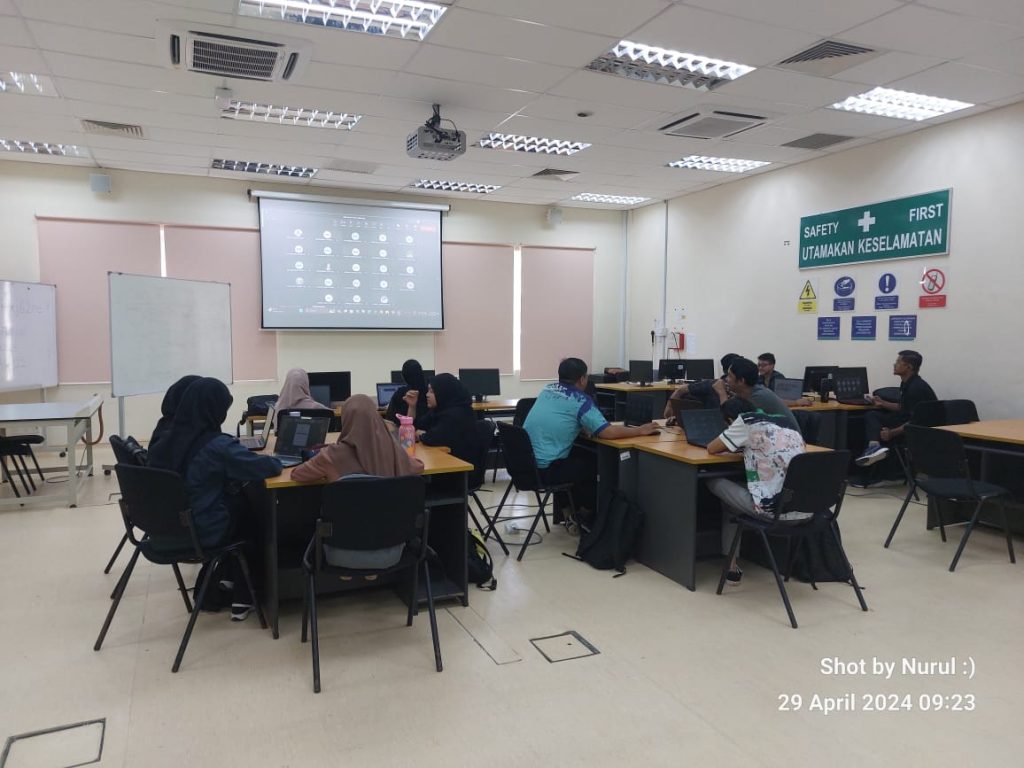
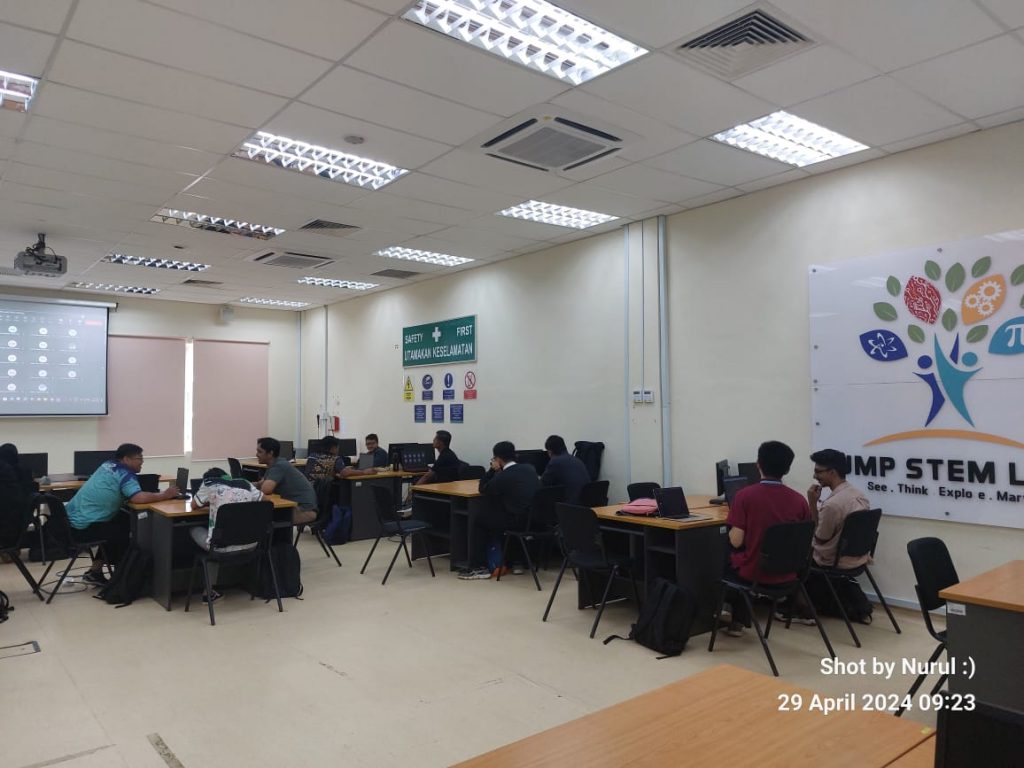

Today’s industrial talk session at UMP STEM Lab =), featuring an experienced speaker, Ts Fouzun Nassir, R&D Director of CREST (https://crest.my/). Mr Fouzun delved into the subject of advanced wireless communication. The two-hour discussion was filled with engaging insights and thought-provoking questions, addressing various aspects of the communication technology. Let’s explore some of the key topics discussed during the session:
The talk by En Fouzun Nassir provided valuable insights into the complexities and future prospects of wireless communication. Especially for BTE 3232 students, Communication System Design Laboratory.
Today’s tech talk by En Fouzun Nassir marks an exciting initiative in UMP STEM Lab Tech Talk 2024/2 series, aimed at bridging the gap between industry expertise and student learning. With a focus on the subject of BTE 3232 Communication System Design Lab, esteemed experts from various fields come together to share their wealth of experience and insights with students. These talks serve as invaluable opportunities for students to gain firsthand knowledge, engage with industry professionals, and enrich their understanding of real-world applications in communication system design.
To all BTE 3232 students, thank you very much for your active participations throughout the talk =).
Nurul Hazlina Noordin
April 29th, 2024
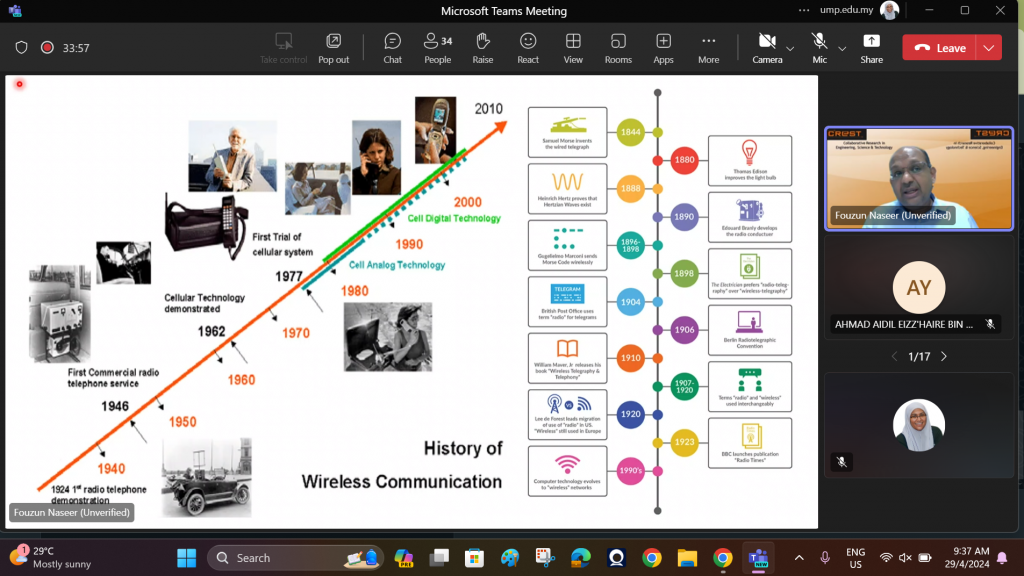




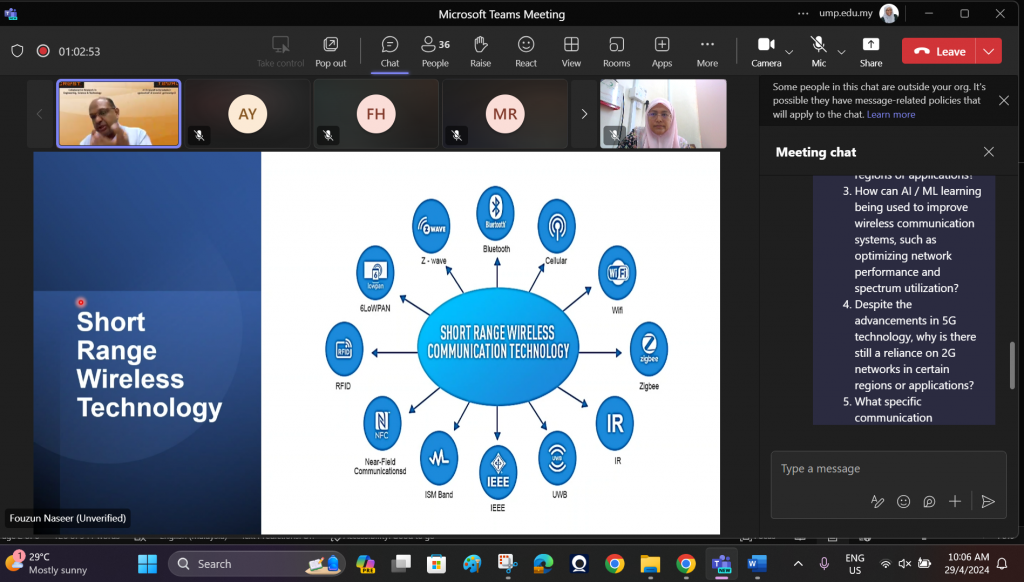
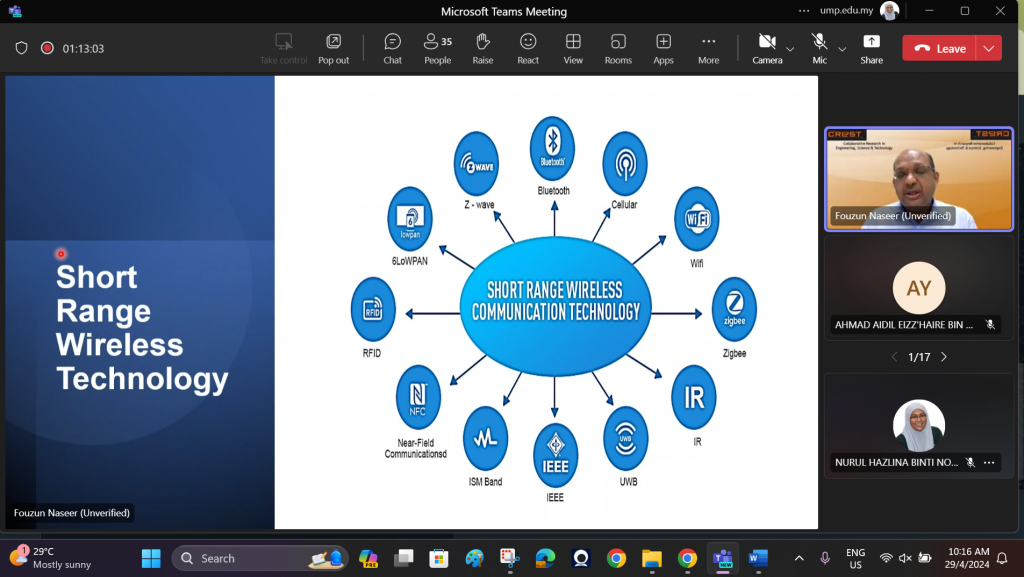
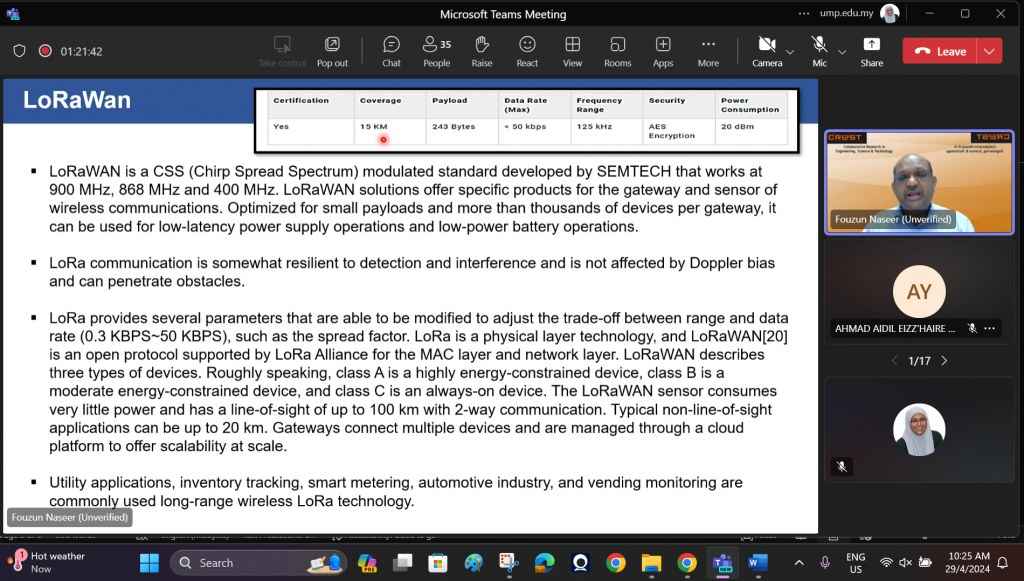
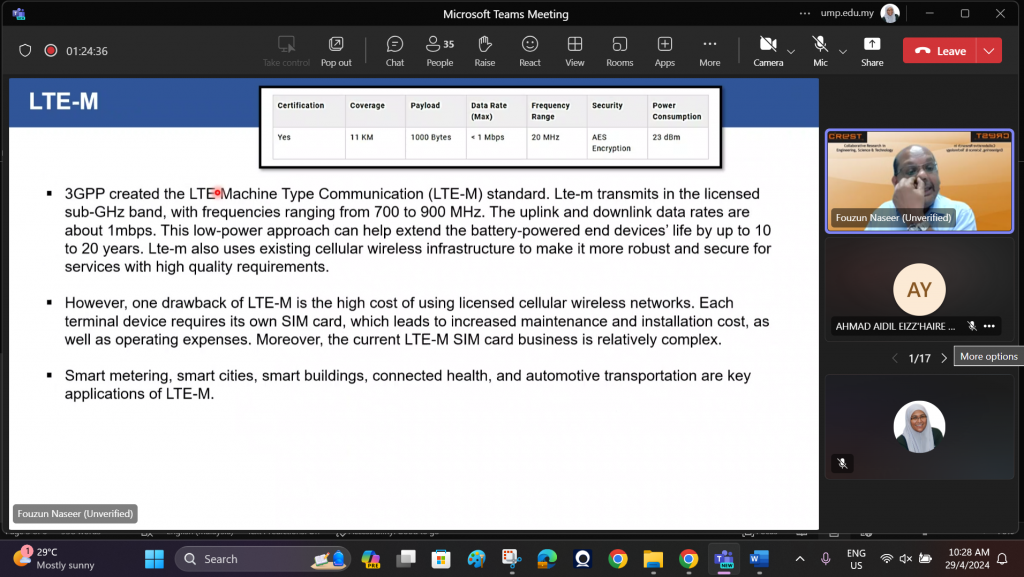
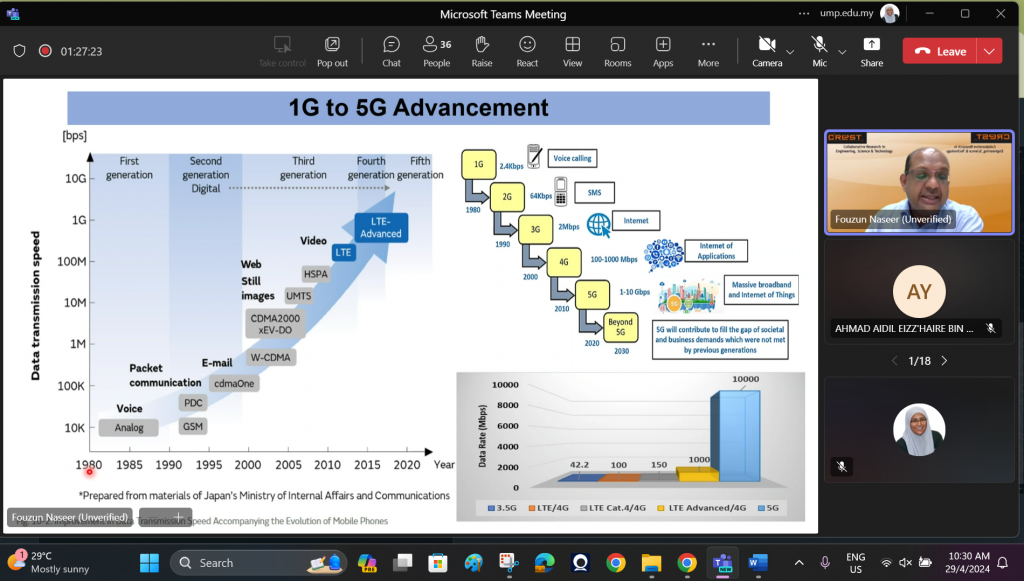
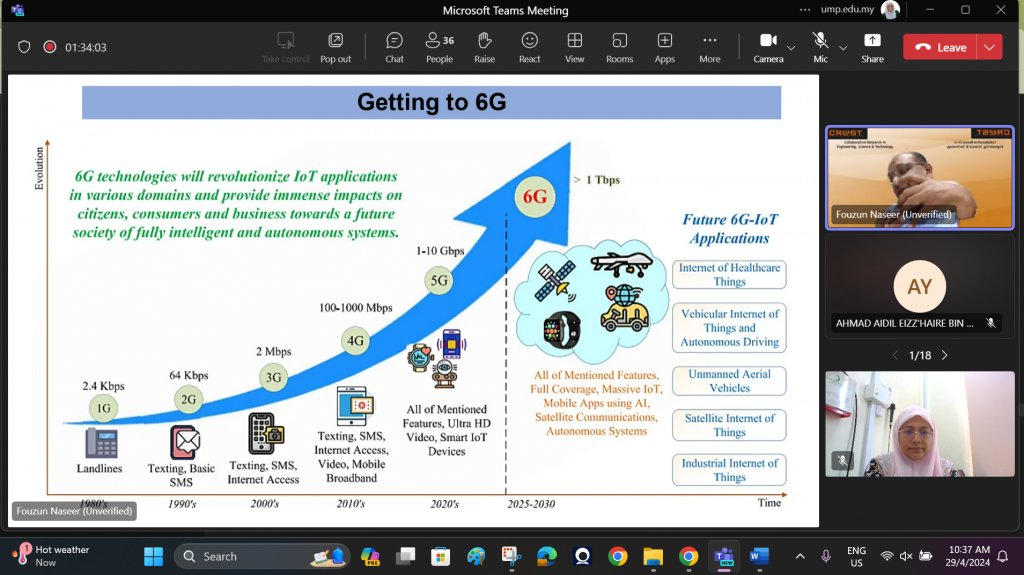
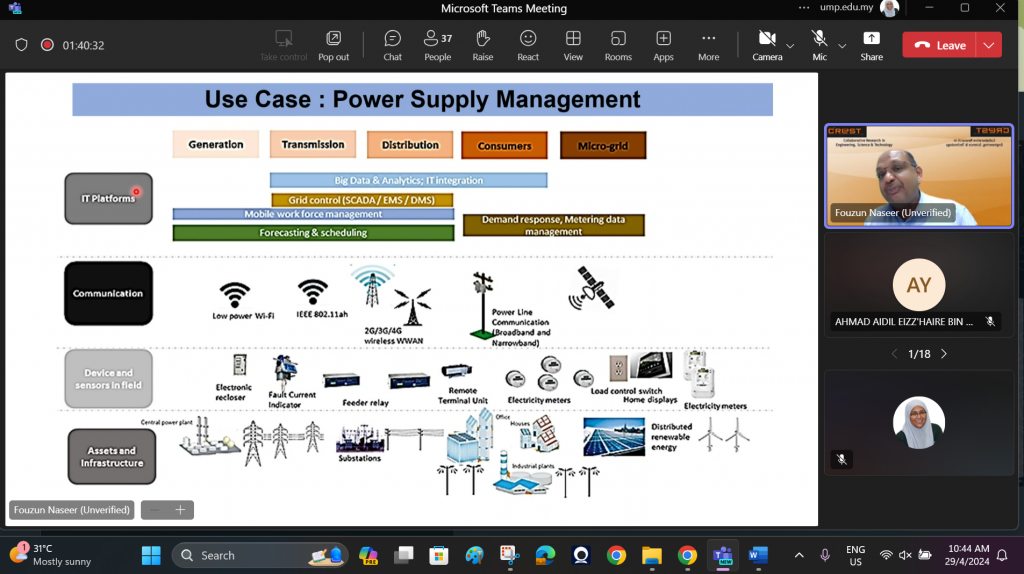
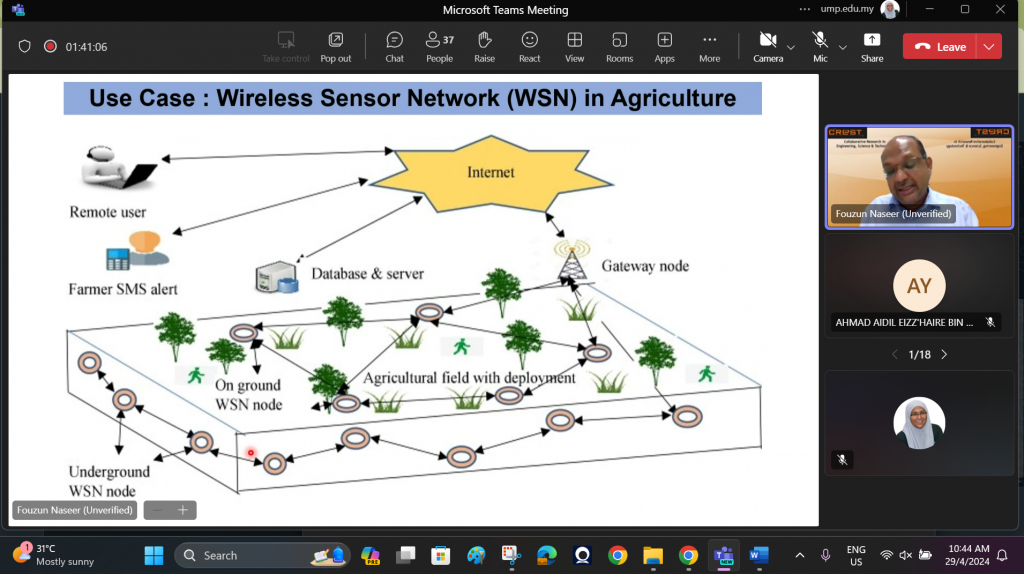
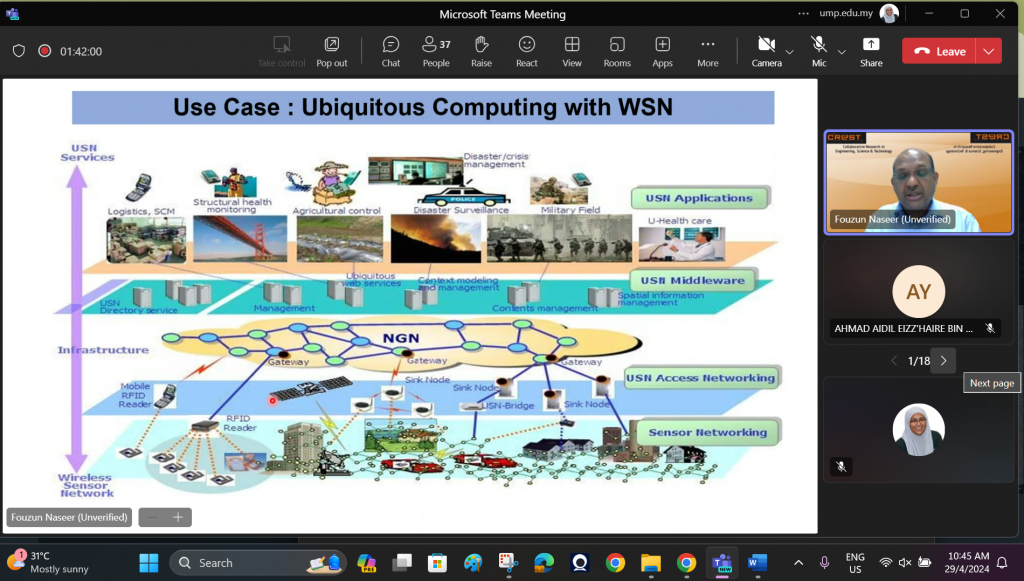
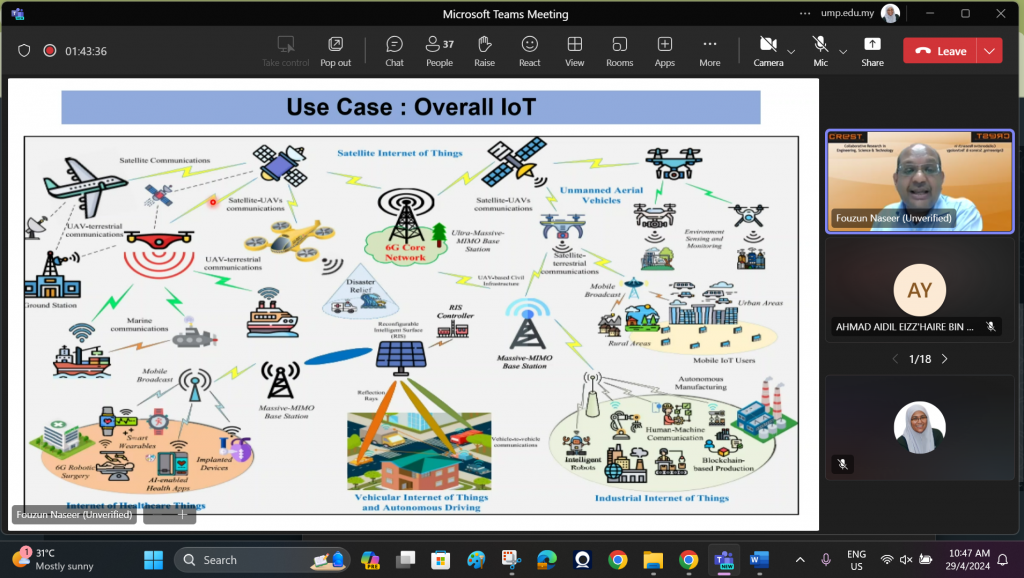
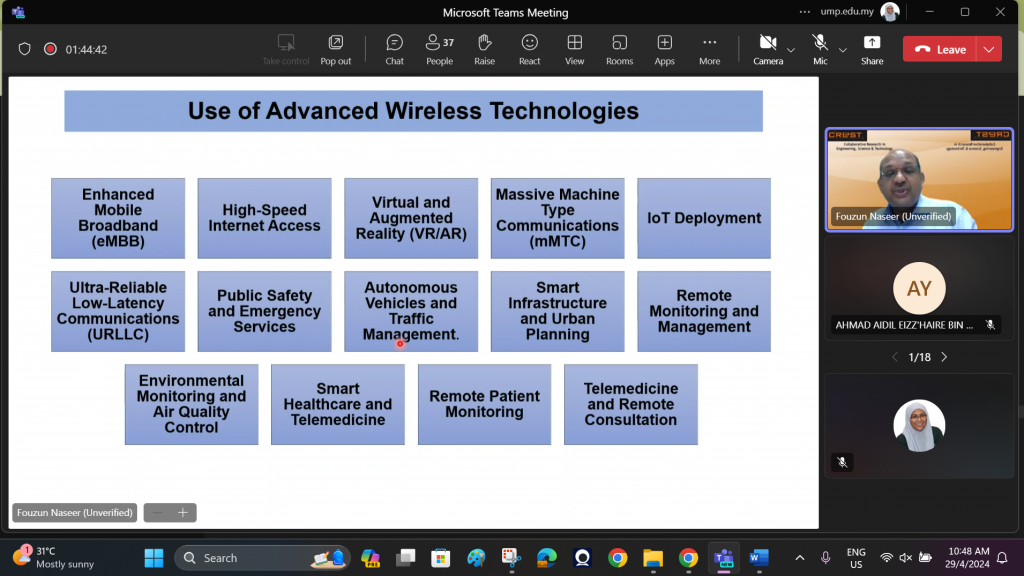
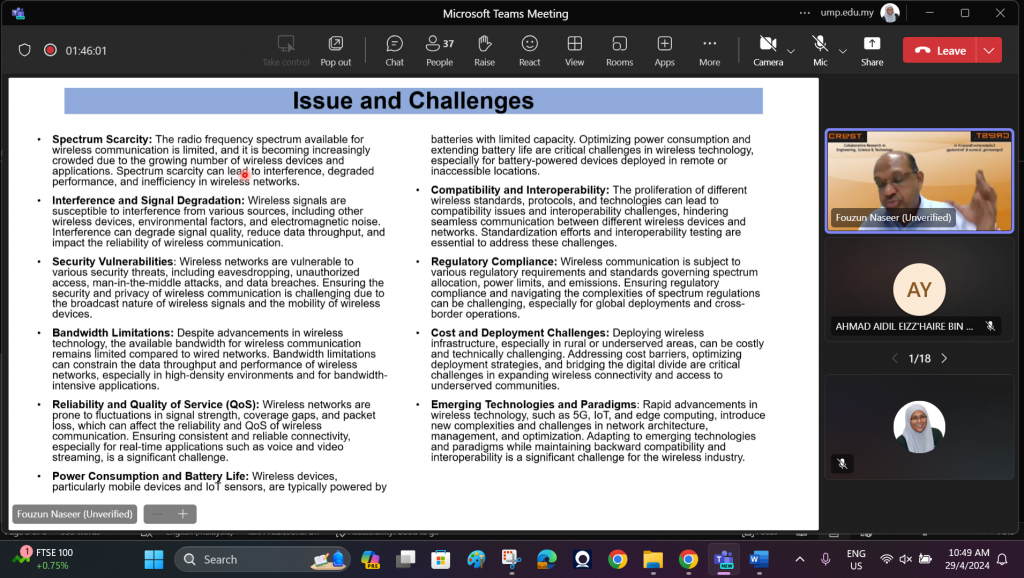

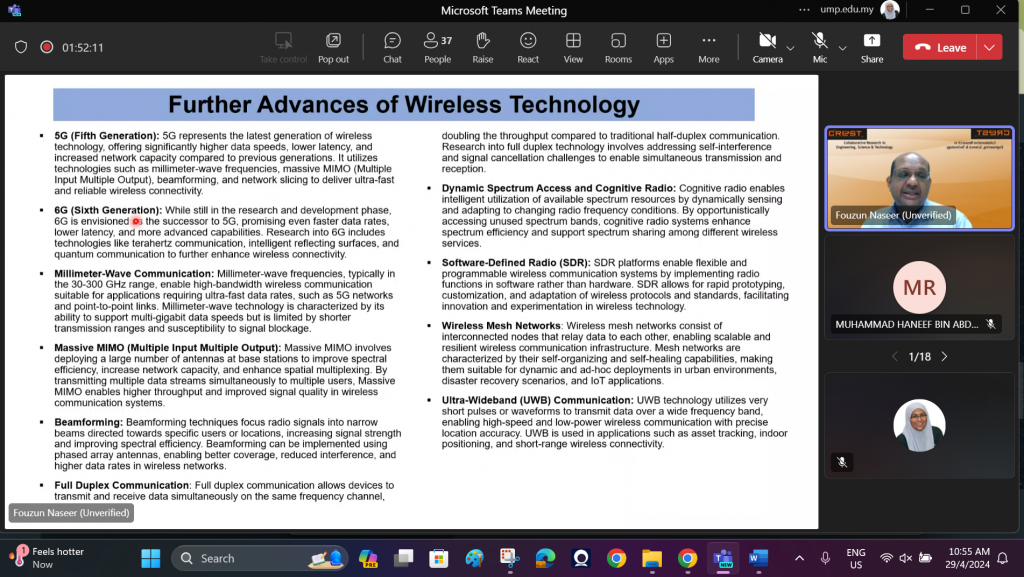
The project assignment for BTE 3232 Communication System Design Laboratory is designed to provide students with practical experience and insight into various aspects of communication systems. The assignment comprises three segments:
Each segment carries equal weightage and contributes 40% towards the overall assessment.



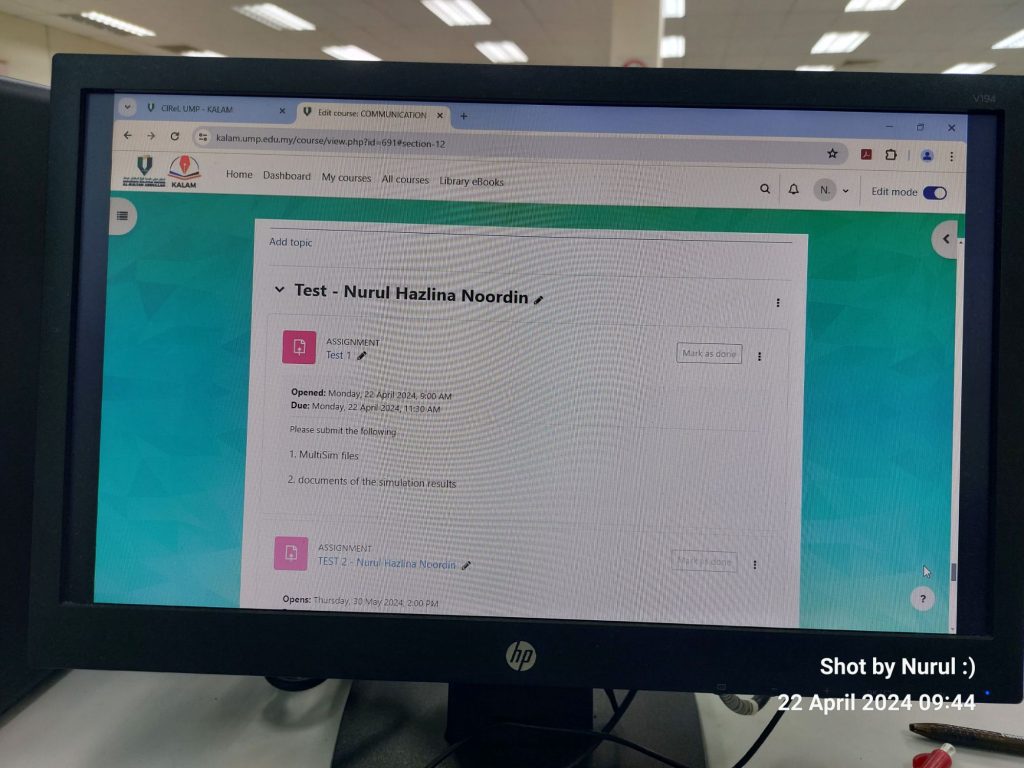
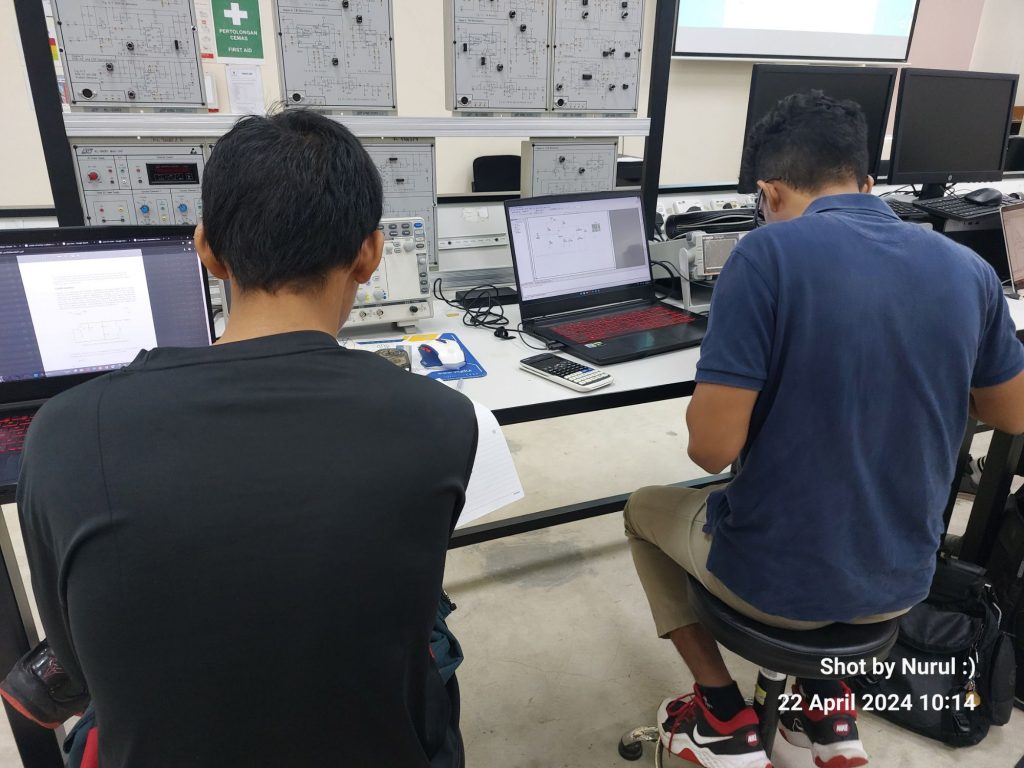
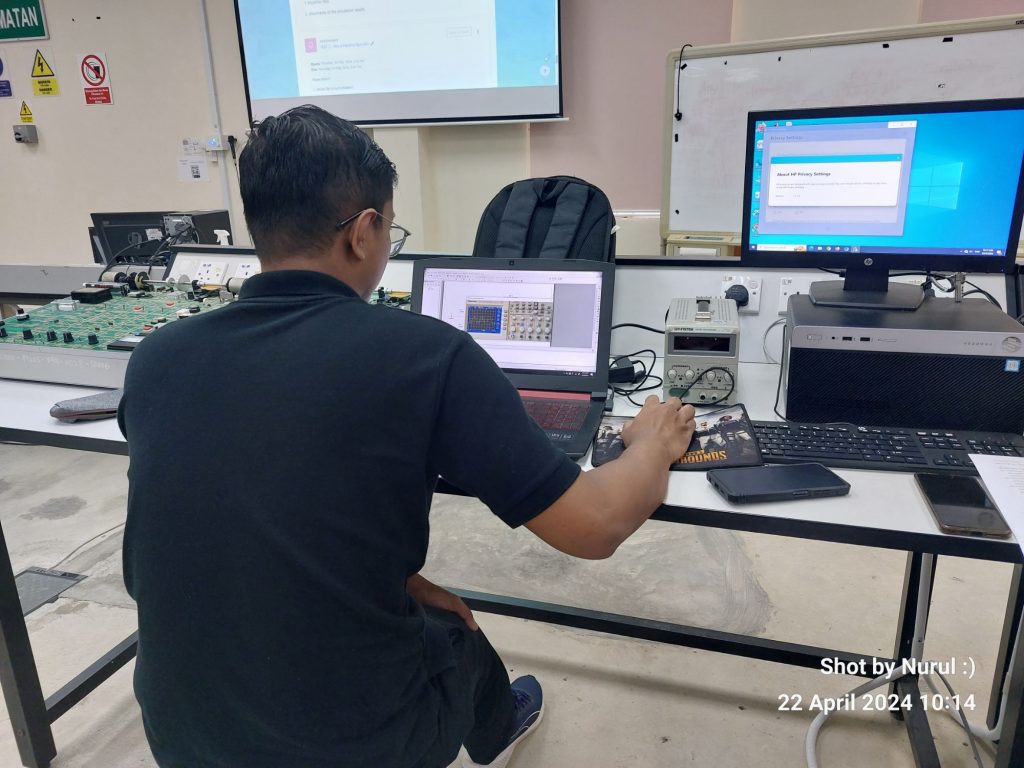
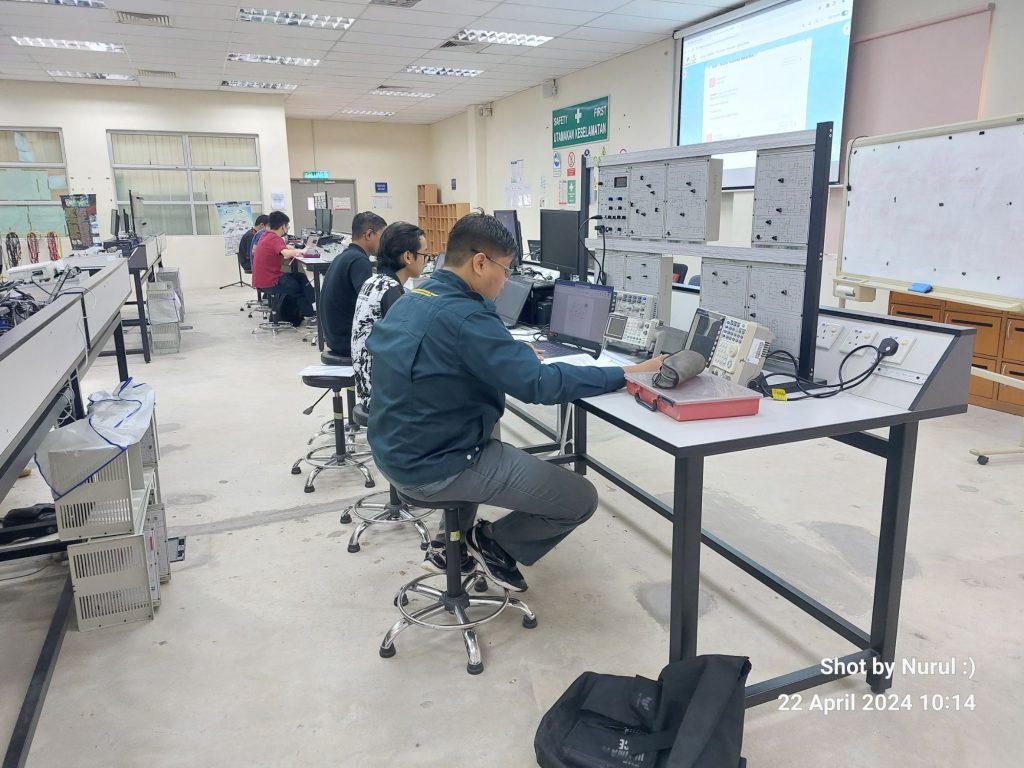

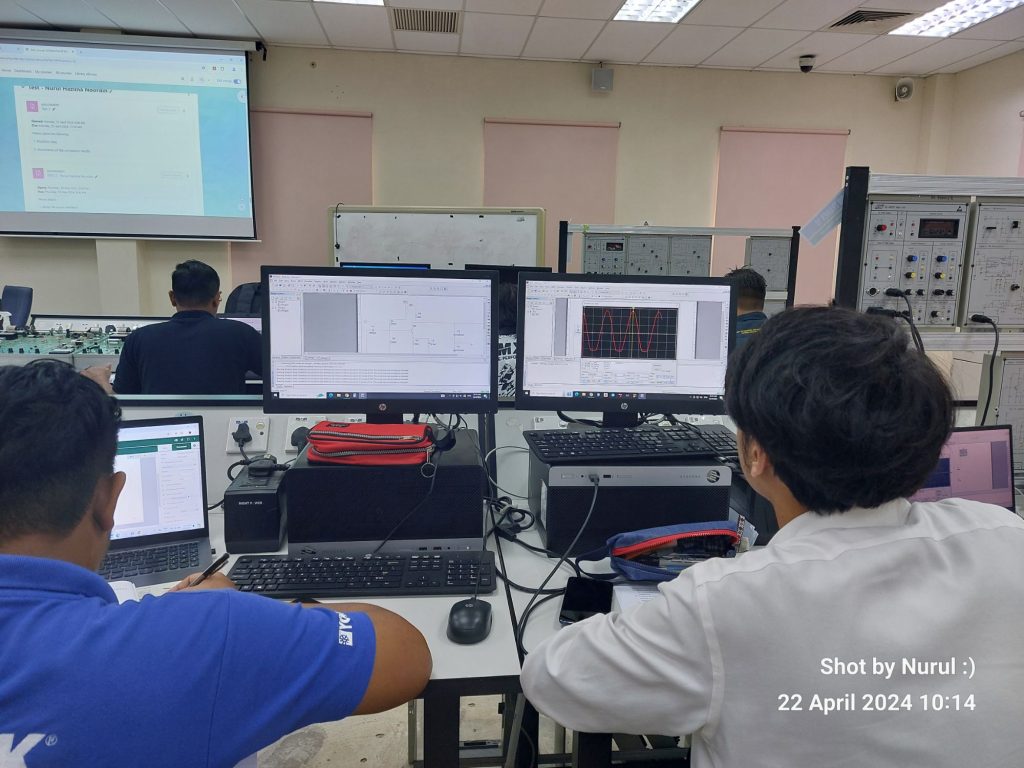

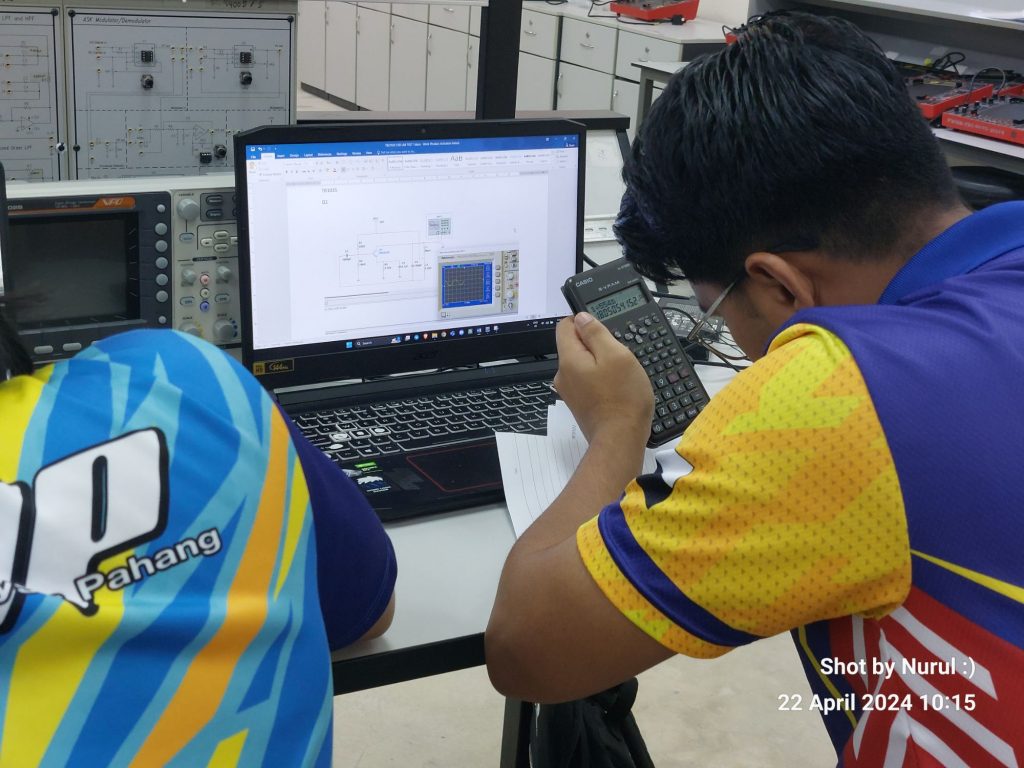
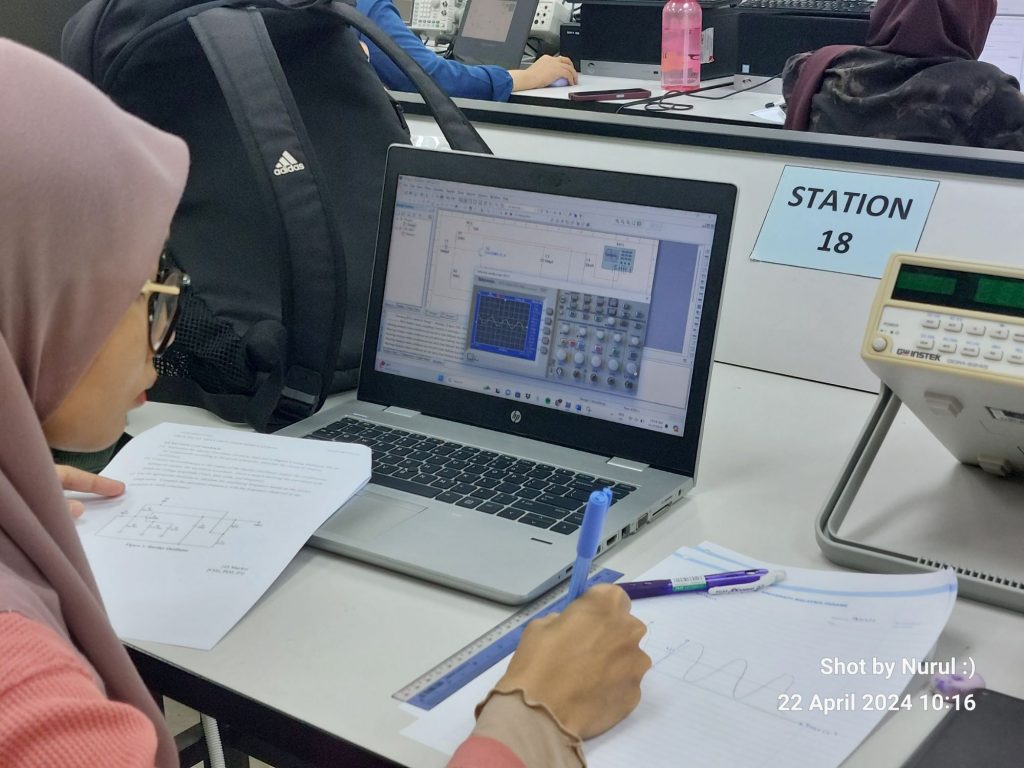
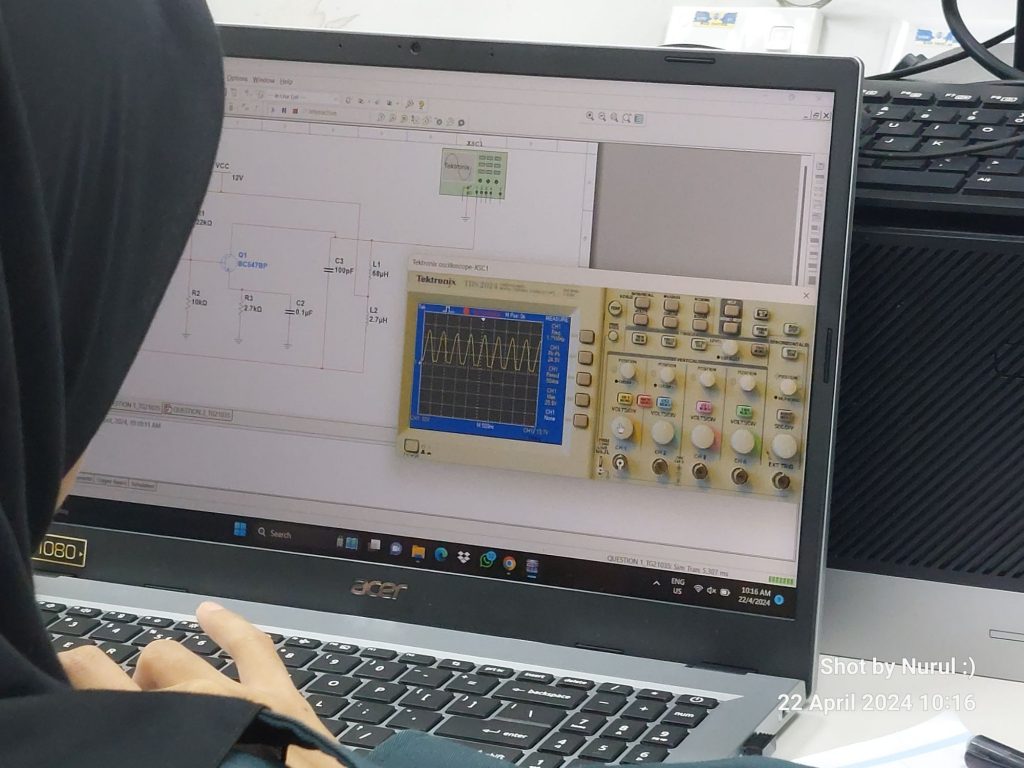
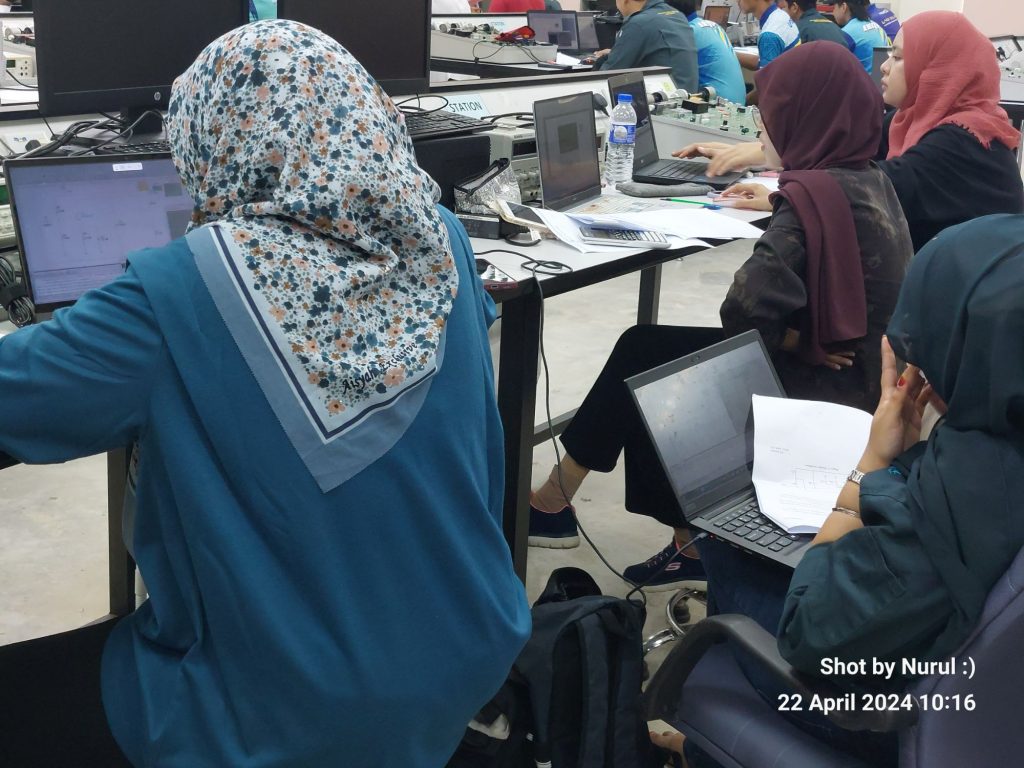

Hi BTE1522-ian,
Salam Ramadhan Al-Mubarak.
Today in our lab sessions, we looked into the Frequency Modulation (FM) modulation and demodulation technique. This hands-on experience not only offers insight into the fundamentals of communication systems but also provides a practical understanding of why FM remains a preferred choice in the broadcasting industry, yepp until today!
Lab 7: FM Modulator – the Essence of Frequency Modulation

In Lab 7, we explored the concept behind Frequency Modulation (FM), a modulation technique widely employed in radio broadcasting and communication systems. FM involves varying the frequency of a carrier signal in accordance with the amplitude of the modulating signal. But why do radio stations still predominantly utilize FM over other modulation techniques?
One primary reason is its superior resistance to noise. Unlike Amplitude Modulation (AM), which suffers from susceptibility to atmospheric interference and electrical noise, FM offers better fidelity and clarity in signal transmission. This is crucial for broadcasting music and speech, ensuring high-quality audio reception for listeners.
Moreover, FM allows for efficient bandwidth utilization. By varying the frequency of the carrier signal, FM can accommodate a wide range of audio frequencies within a smaller bandwidth, making it more spectrum-efficient compared to AM.
Building Your Own FM Transmitter: A Fascinating Project
Constructing your own FM transmitter can be an exciting project, offering hands-on experience and a deeper understanding of FM modulation principles. By employing basic electronic components such as oscillators, modulators, and antennas, you can create a simple yet functional FM transmitter. This project not only reinforces theoretical concepts but also fosters creativity and problem-solving skills.
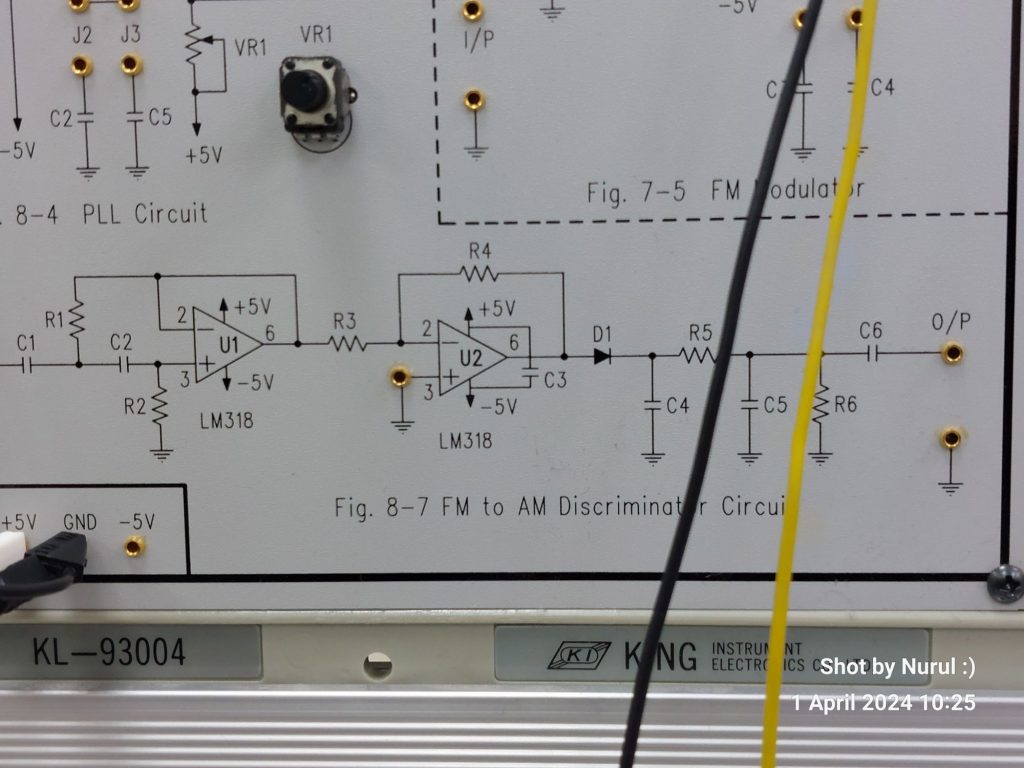
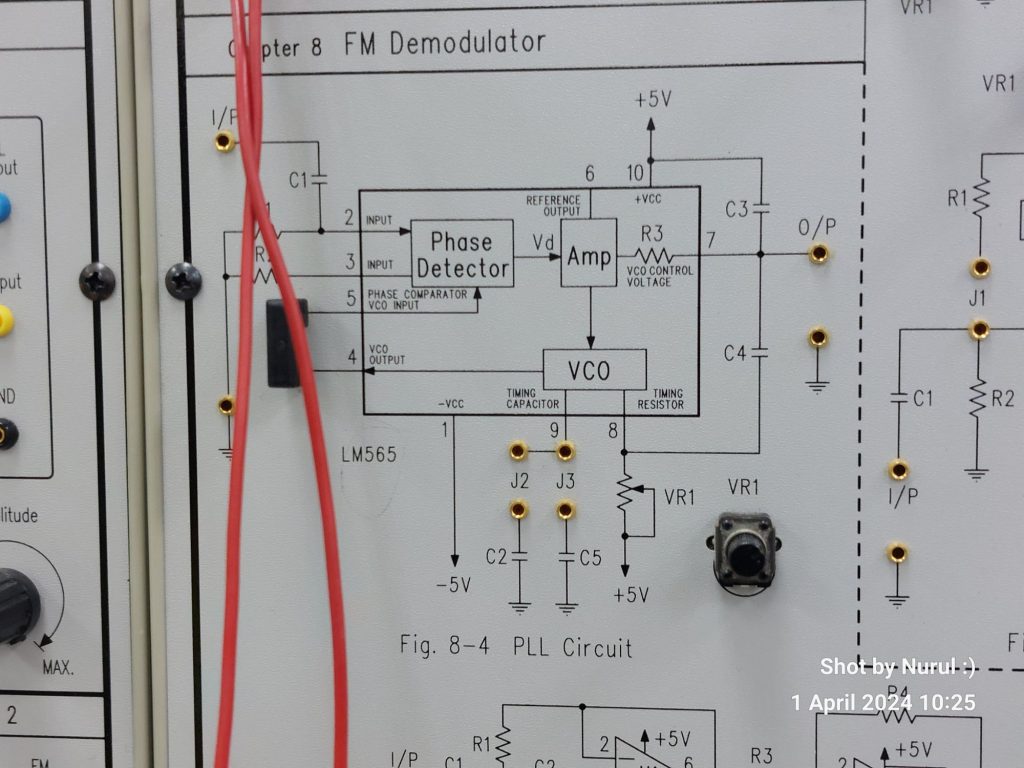
Lab 8: FM Demodulator – Deciphering the Magic of FM Demodulation
In Lab 8, we explored FM demodulation techniques, which are essential for retrieving the original modulating signal from an FM modulated carrier wave. Two common demodulation methods used are Phase-Locked Loop (PLL) and Frequency Discriminator (FM-AM discriminator).
PLL demodulation relies on a feedback loop to synchronize the phase of a local oscillator with the incoming FM signal. This synchronized oscillator produces an output voltage proportional to the frequency deviation of the FM signal, allowing for accurate demodulation.
On the other hand, FM-AM discriminator demodulation capitalizes on the frequency-to-amplitude conversion characteristic of FM signals. By passing the FM signal through a frequency-selective circuit, variations in frequency translate into variations in amplitude, which can then be extracted as the modulating signal.
Building Your Own FM Receiver: A Captivating Endeavor
Constructing an FM receiver offers a rewarding experience, enabling you to tune in to your favorite radio stations and explore the world of wireless communication firsthand. With components such as antennas, tuned circuits, and detectors, you can assemble a basic FM receiver capable of capturing and demodulating FM signals. This project not only enhances technical skills but also fosters a deeper appreciation for the intricacies of communication systems.

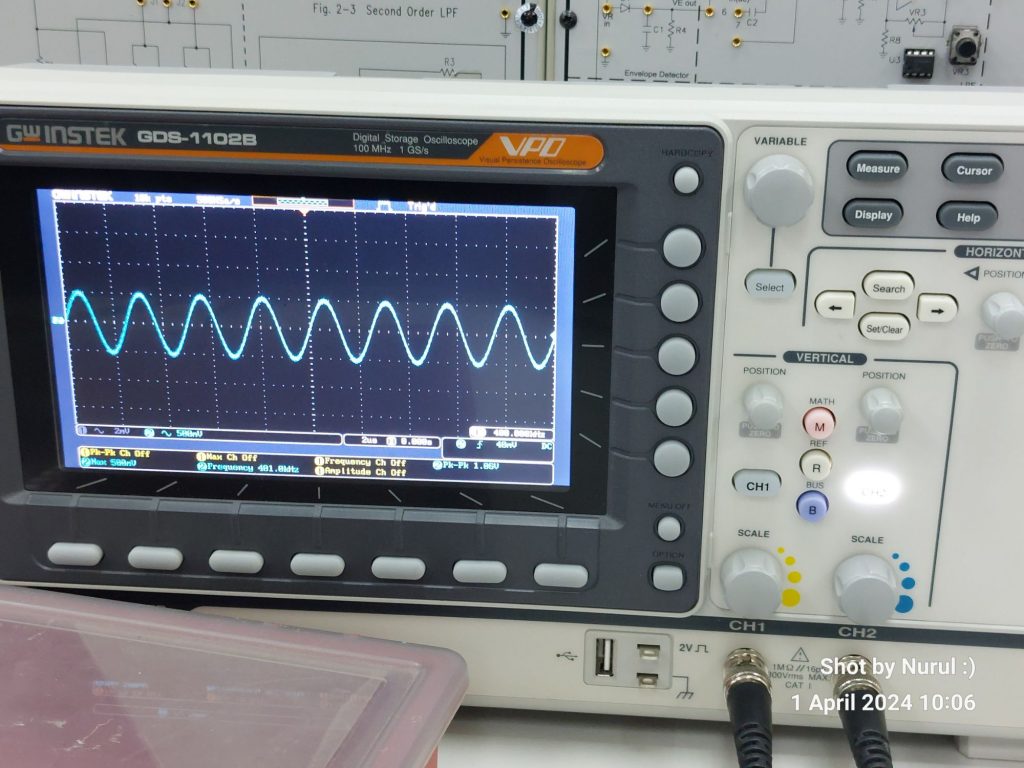
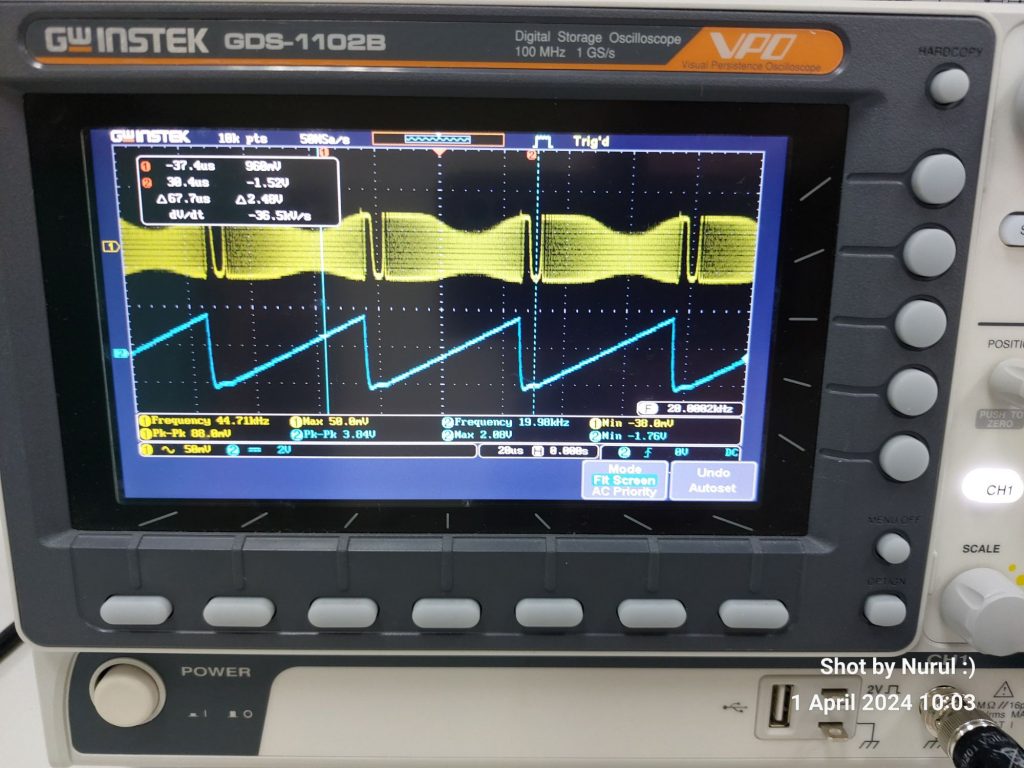
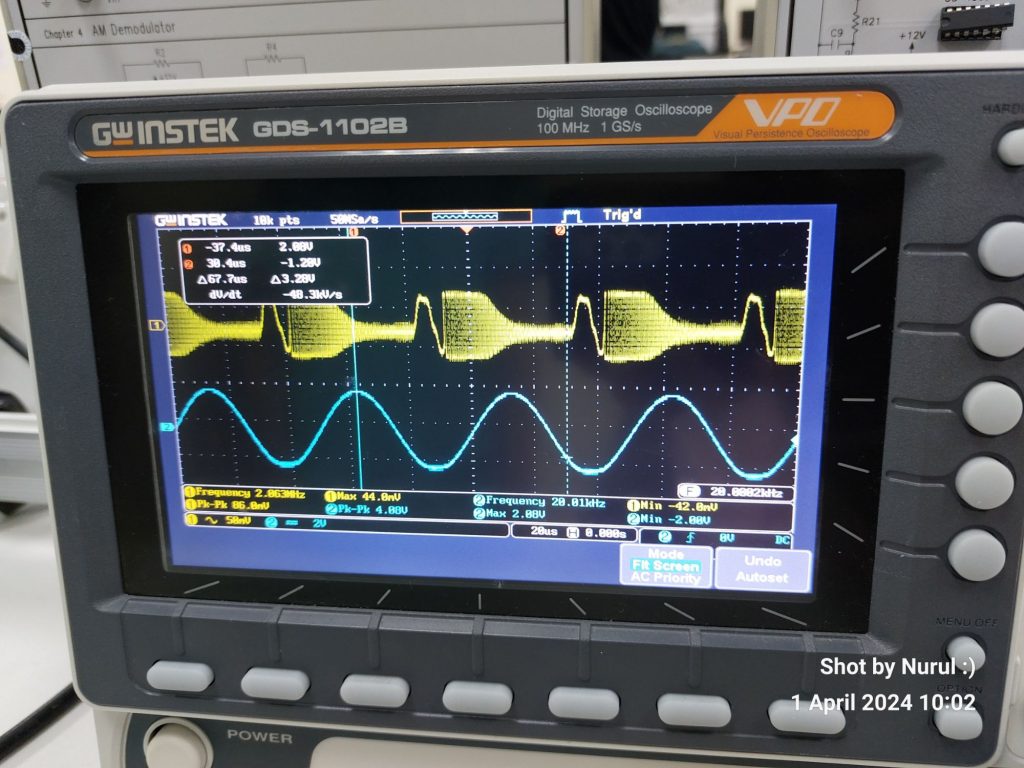
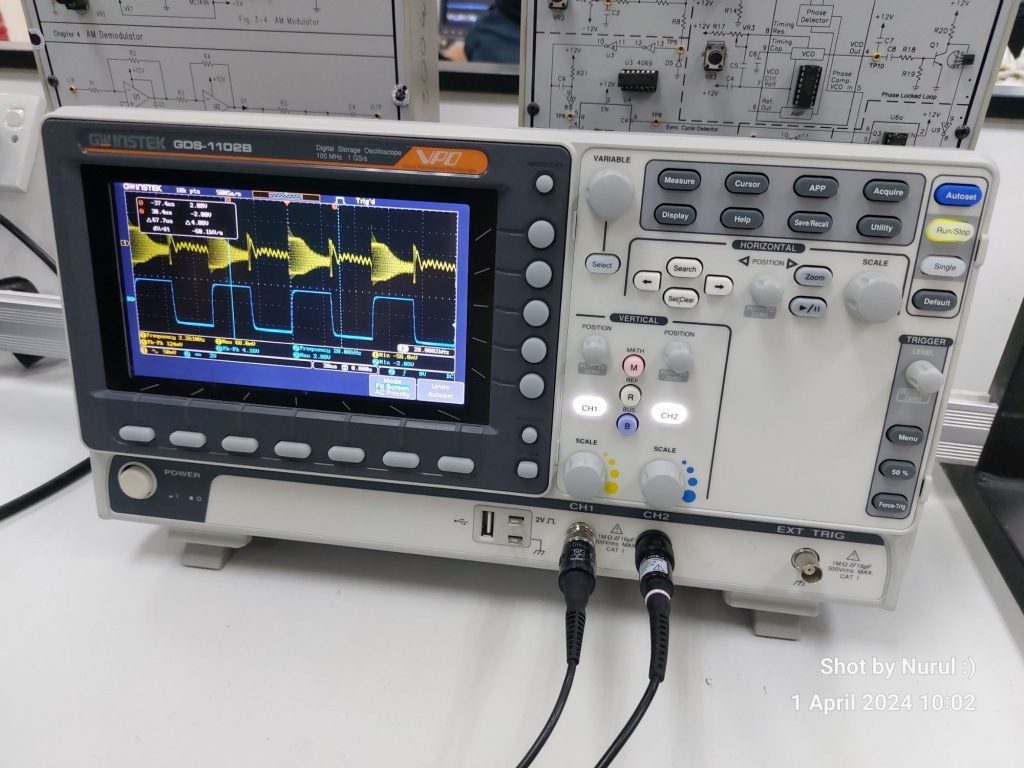
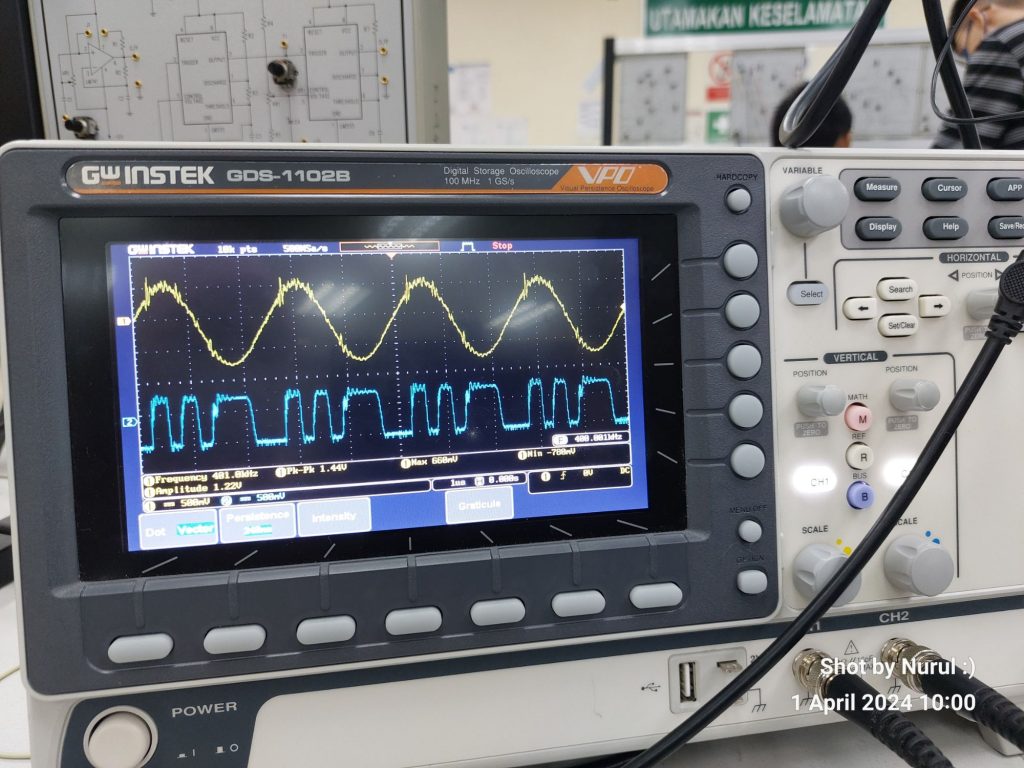
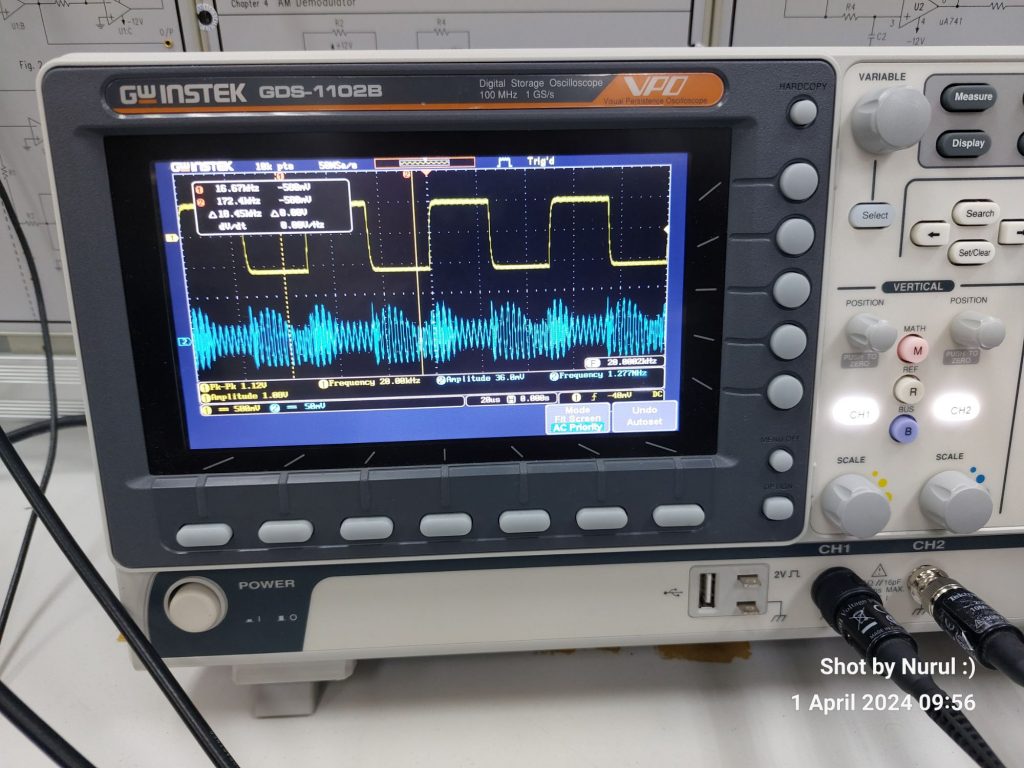
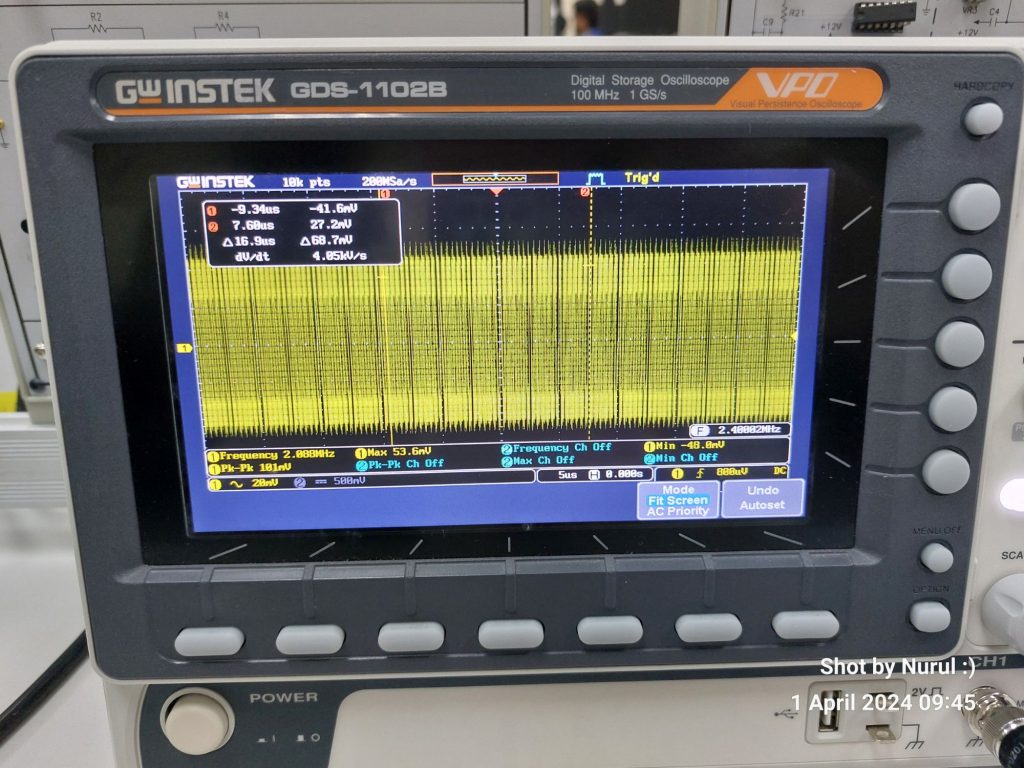

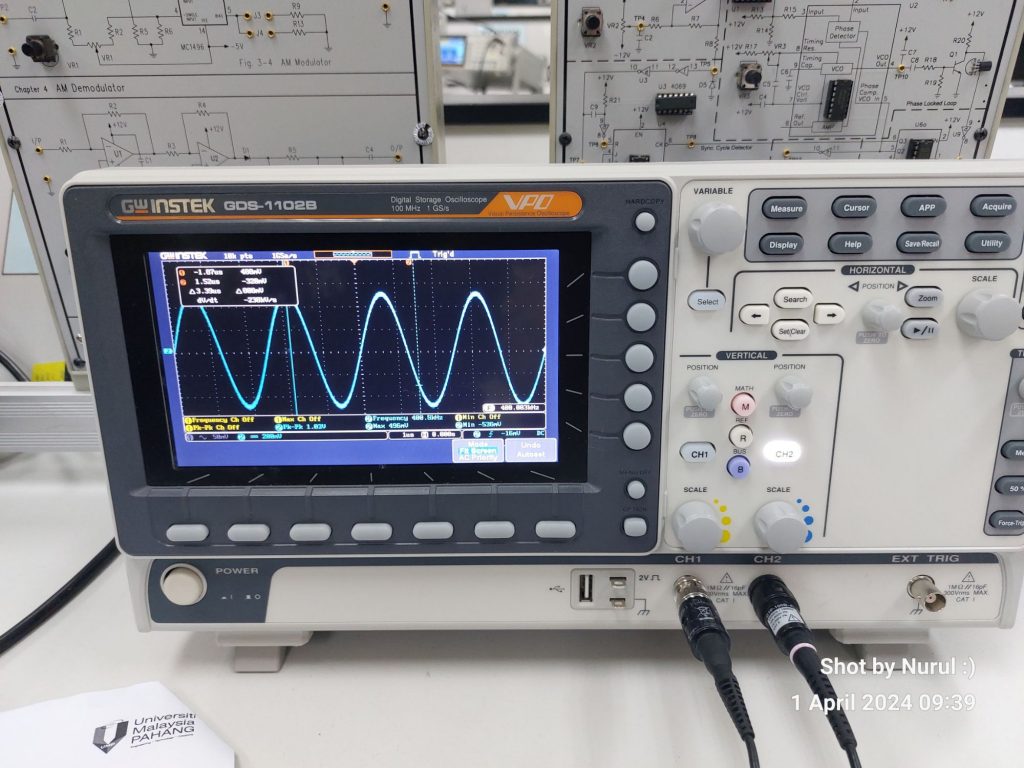
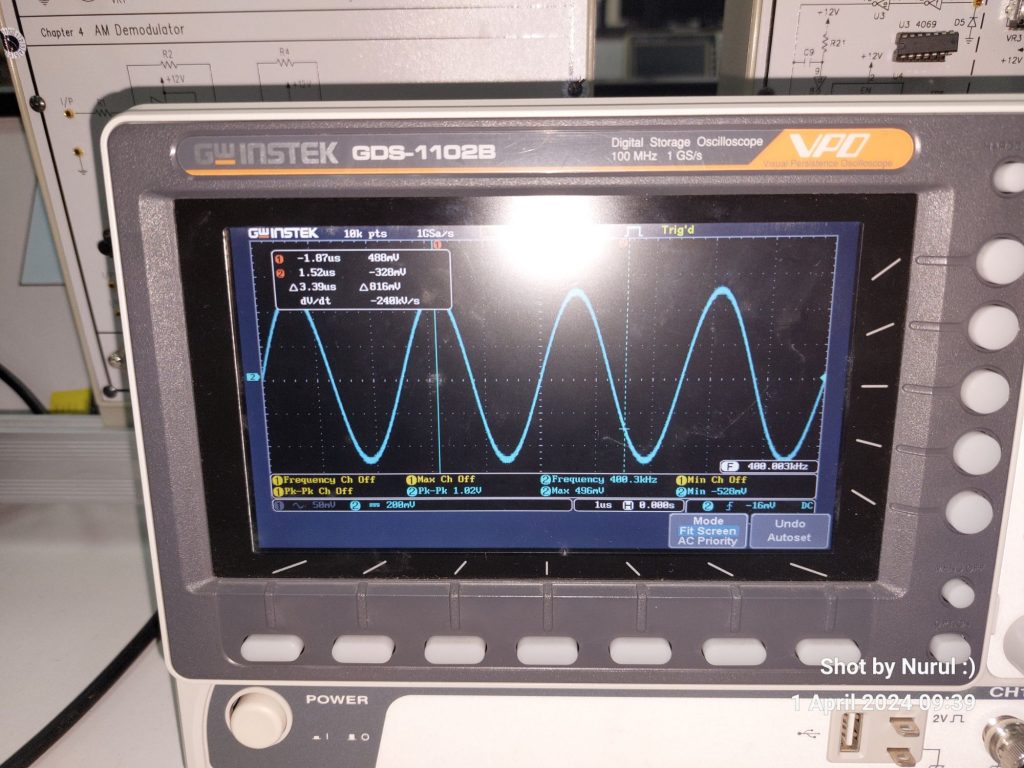
In conclusion, our lab experiments in FM modulation and demodulation provide invaluable insights into the design and operation of communication systems. By understanding the principles behind FM modulation and demodulation, as well as engaging in hands-on projects, we can further enrich our knowledge and appreciation for the fascinating world of wireless communication.
Keep exploring, keep learning, and let your curiosity guide you on this exciting journey of discovery!
Before going into the practical aspects of our lab assignment, let’s take a recap the significance of passband in the context of these modulation techniques.
Modulation Techniques

While digital modulation techniques dominate contemporary communication systems, our focus in BTE3233 remains on analog carrier modulation techniques. These techniques, steeped in tradition, offer invaluable insights into the evolution of modern modulation methods.
SSB and DSB Modulation
SSB and DSB modulation techniques offer unique advantages over traditional Amplitude Modulation (AM) and Frequency Modulation (FM) methods. Despite the widespread adoption of AM and FM in various communication applications, SSB and DSB modulation techniques continue to hold relevance due to their efficient utilization of passband.
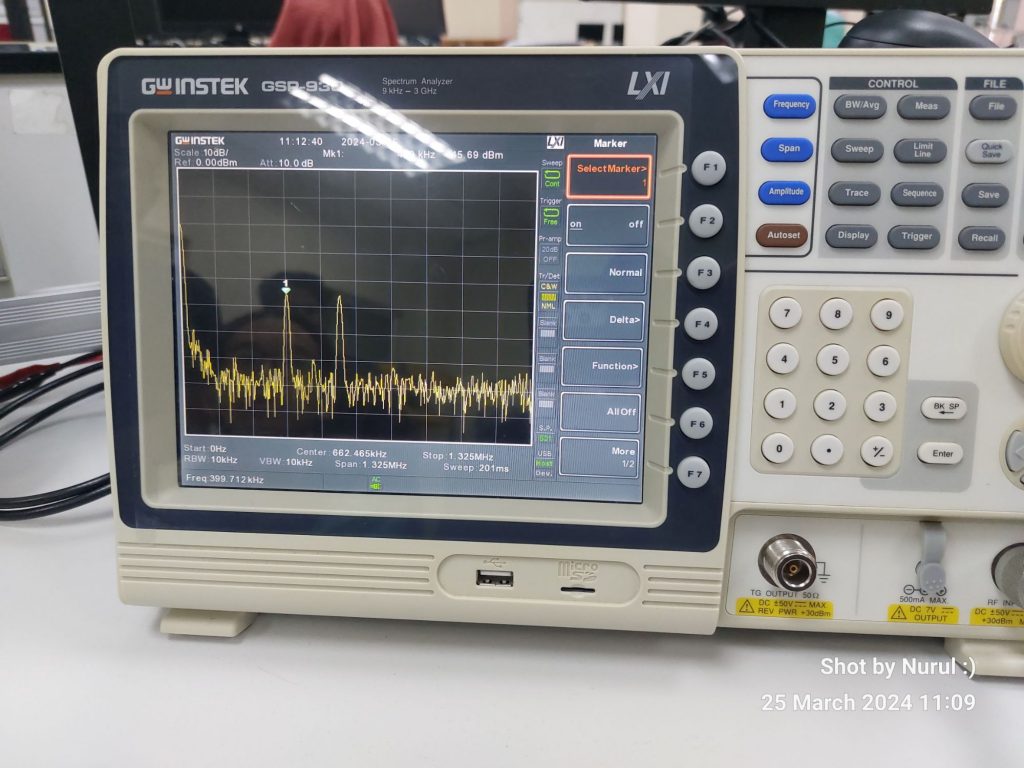
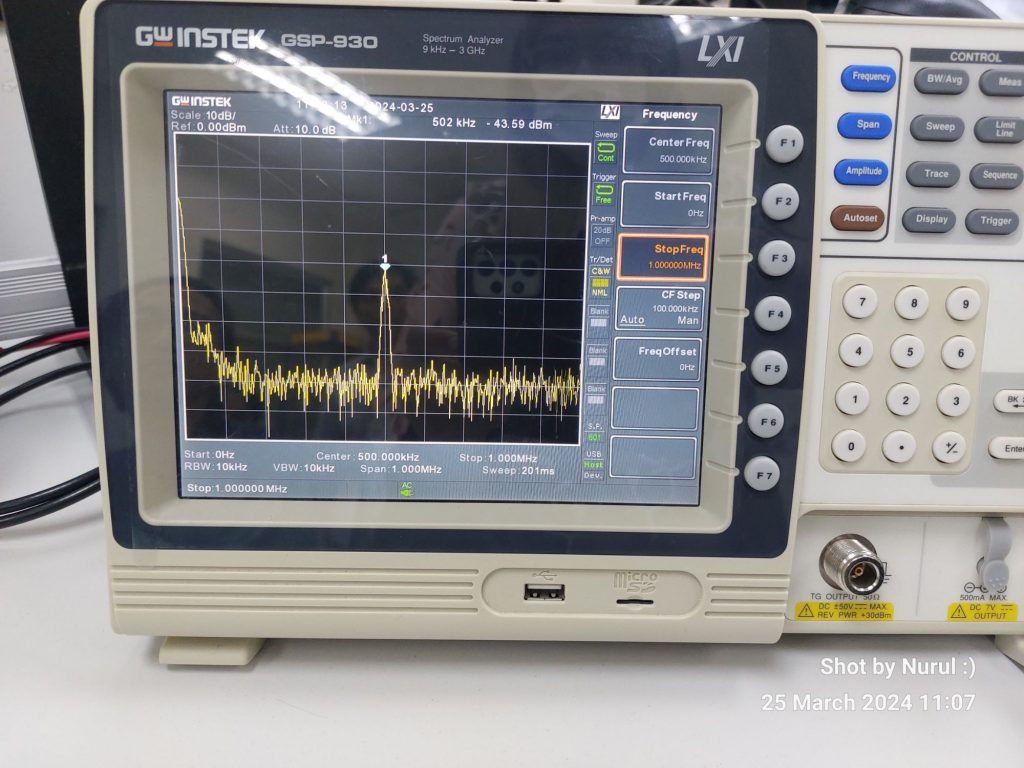
In the frequency spectrum, Single Sideband (SSB) modulation exhibits a distinctive characteristic compared to traditional Amplitude Modulation (AM). Unlike AM, which transmits both sidebands along with the carrier signal, SSB modulation only transmits either the upper sideband (USB) or the lower sideband (LSB) along with the carrier. As a result, SSB modulation effectively utilizes half of the bandwidth required by AM, leading to enhanced spectral efficiency.
In the frequency domain, SSB modulation produces a spectrum with a single sideband extending from either side of the carrier frequency, with the other sideband and the carrier suppressed. This concentrated spectral distribution enables SSB signals to occupy a narrower bandwidth, making them ideal for conserving precious frequency resources while maintaining signal integrity. During demodulation, the suppressed sideband is effectively reconstructed, ensuring faithful reproduction of the original message signal. Thus, in the frequency spectrum, SSB modulation and demodulation techniques showcase a streamlined and efficient utilization of frequency resources, paving the way for optimized communication system design.
Advantages of SSB and DSB Modulation
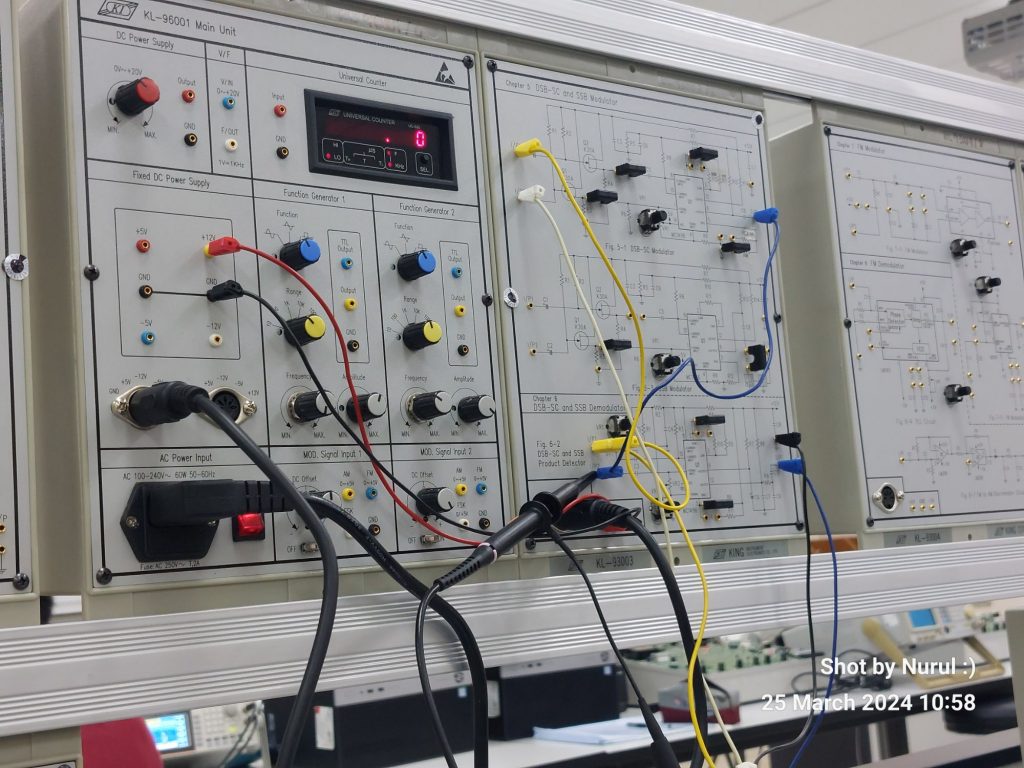
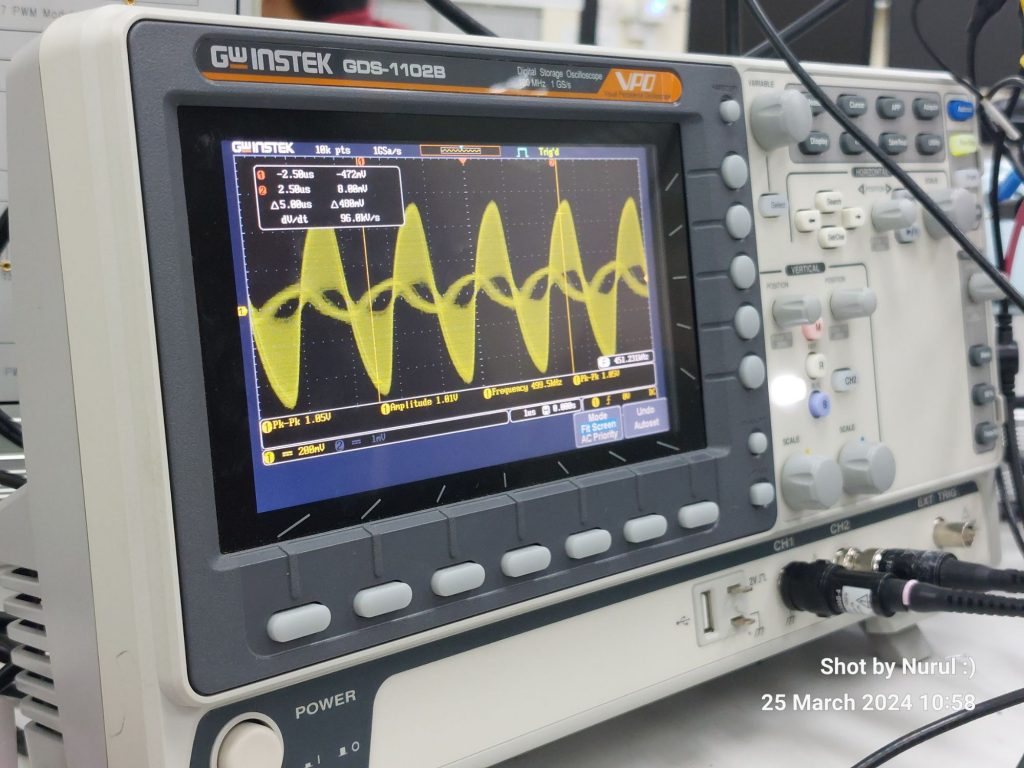
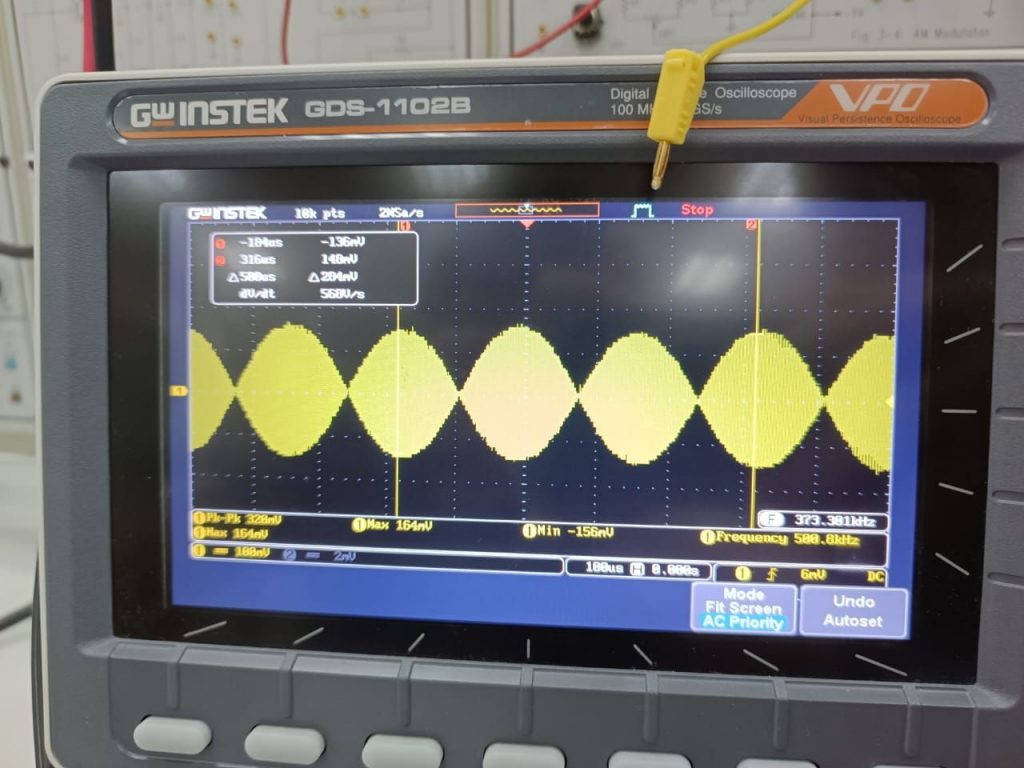
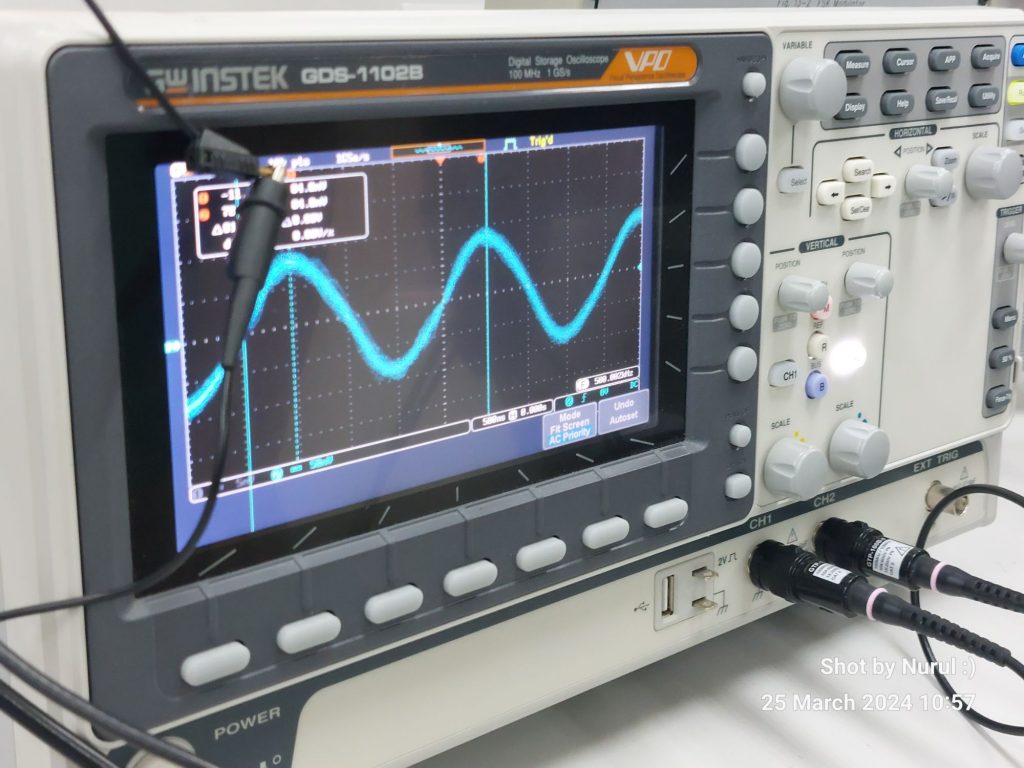

As we went through our lab assignment today focusing on SSB modulation and demodulation, it’s essential to recognize the pivotal role of passband in shaping the efficiency and effectiveness of these modulation techniques. Note that the advantages of SSB and DSB modulation, enable the possibility to design robust and efficient communication systems that thrive within the constraints of the passband.
Stay tuned for our upcoming lab session (FM Mod & Demodulation), where we’ll translate theory into practice and delve deeper into the practical implementation of Frequency Modulation and its demodulation techniques.
Get ready to explore the fascinating world of frequency-based communication, where signals dance across the spectrum with precision and clarity. Don’t miss out on this exciting opportunity to expand your skills and understanding in communication engineering. See you in the lab!
Why Modulate Signals?
To comprehend the significance of modulation, let’s first consider the limitations of transmitting a signal in its raw form. A simple, unmodulated signal lacks the resilience needed to combat issues like interference, noise, and attenuation over long distances. This is where modulation steps in as our technological superhero.
Amplitude Modulation involves varying the amplitude of a carrier signal in proportion to the instantaneous amplitude of the input signal. In simpler terms, it’s like riding the waves of your favorite radio station. The carrier wave carries the information from the input signal, effectively extending the reach and quality of the transmitted signal.
Why AM?
Now, you might wonder, “Why AM and not something else?” AM modulation has its unique advantages, such as simplicity, ease of implementation, and compatibility with various transmission mediums. However, it comes with challenges like susceptibility to noise and limited bandwidth efficiency, paving the way for modern modulation schemes.
In the ever-evolving landscape of communication systems, engineers sought to address the limitations of AM modulation. This led to the development of more sophisticated schemes like FM (Frequency Modulation) and PM (Phase Modulation). These modern modulation techniques offer improved noise resilience, better bandwidth utilization, and enhanced signal quality.
Demodulation: Unveiling the Message:
Now, let’s transition to the counterpart of our tale – demodulation. Demodulation is the process of retrieving the original signal from the modulated carrier wave. It’s like extracting the hidden treasure from the waves you’ve been riding. In our laboratory, we’ll explore demodulation techniques to decode the transmitted information accurately.
As we journey through the world of AM modulation and demodulation in our Communication System Design Laboratory, remember that these concepts are the cornerstone of effective signal transmission. Understanding the ‘why’ behind modulation and the advancements leading to modern schemes equips us to tackle real-world challenges in the dynamic field of electrical engineering.
So, gear up, future engineers! Let’s ride the waves of knowledge and explore the intricate dance between amplitude, frequency, and phase in the vast ocean of communication systems.
